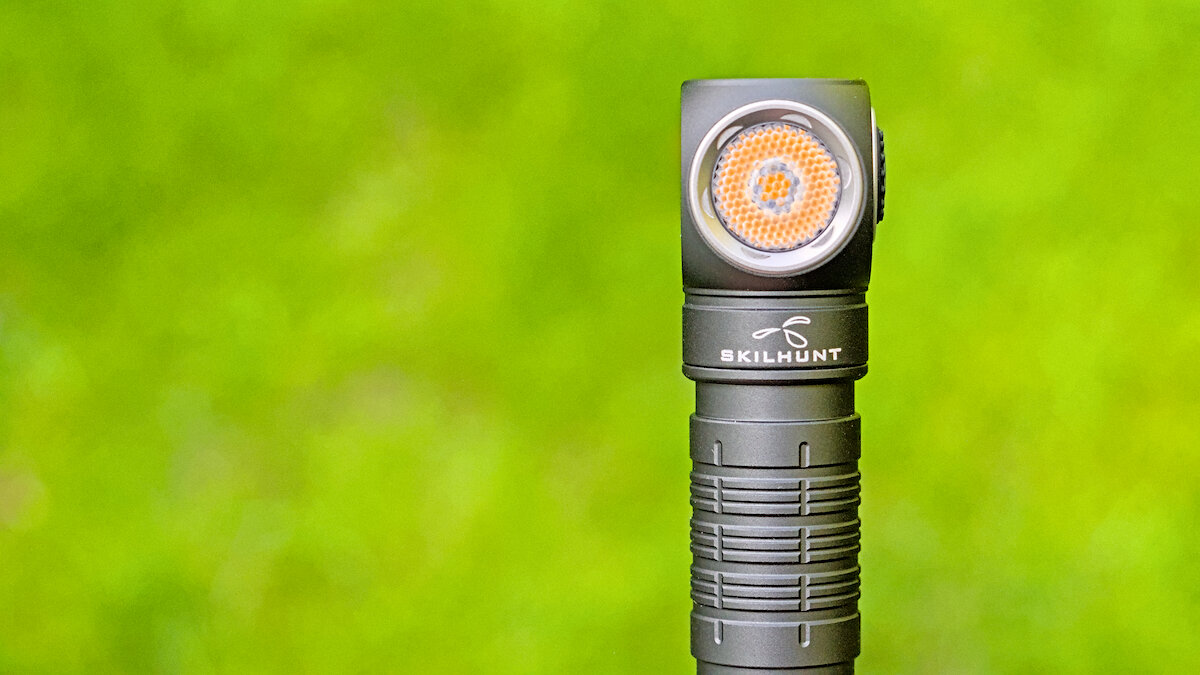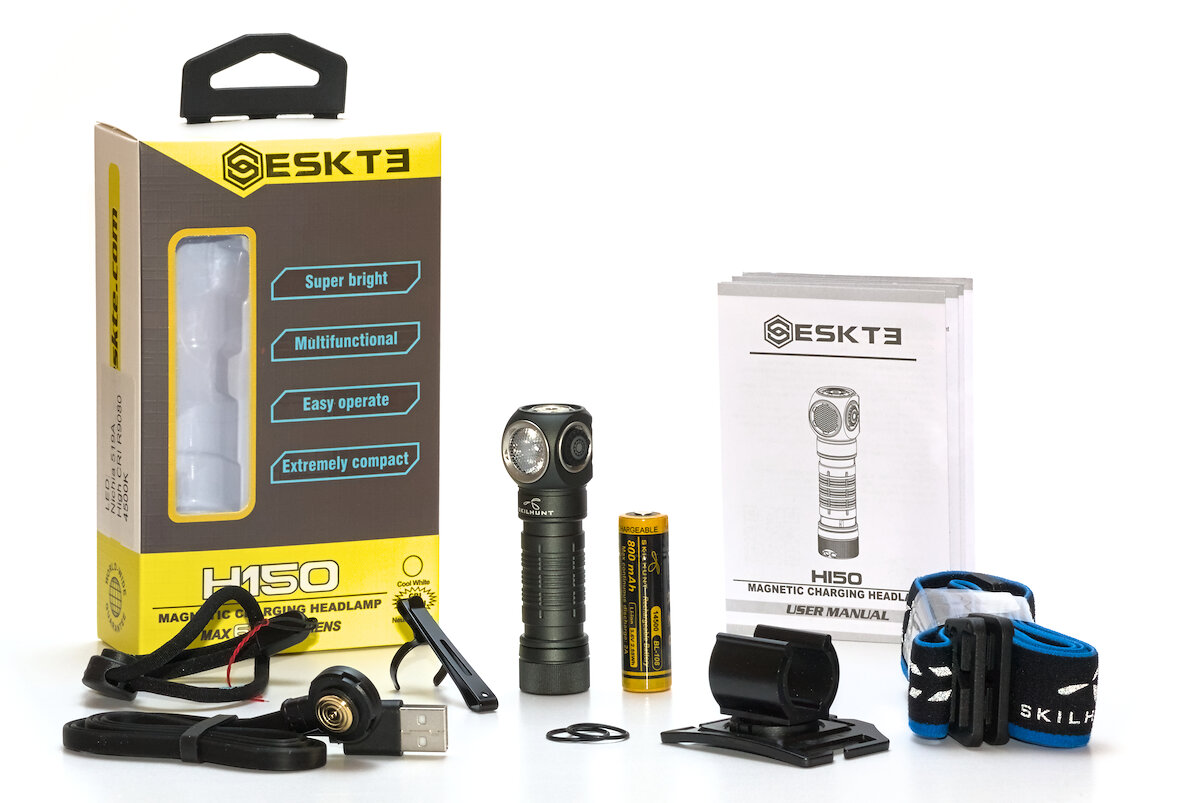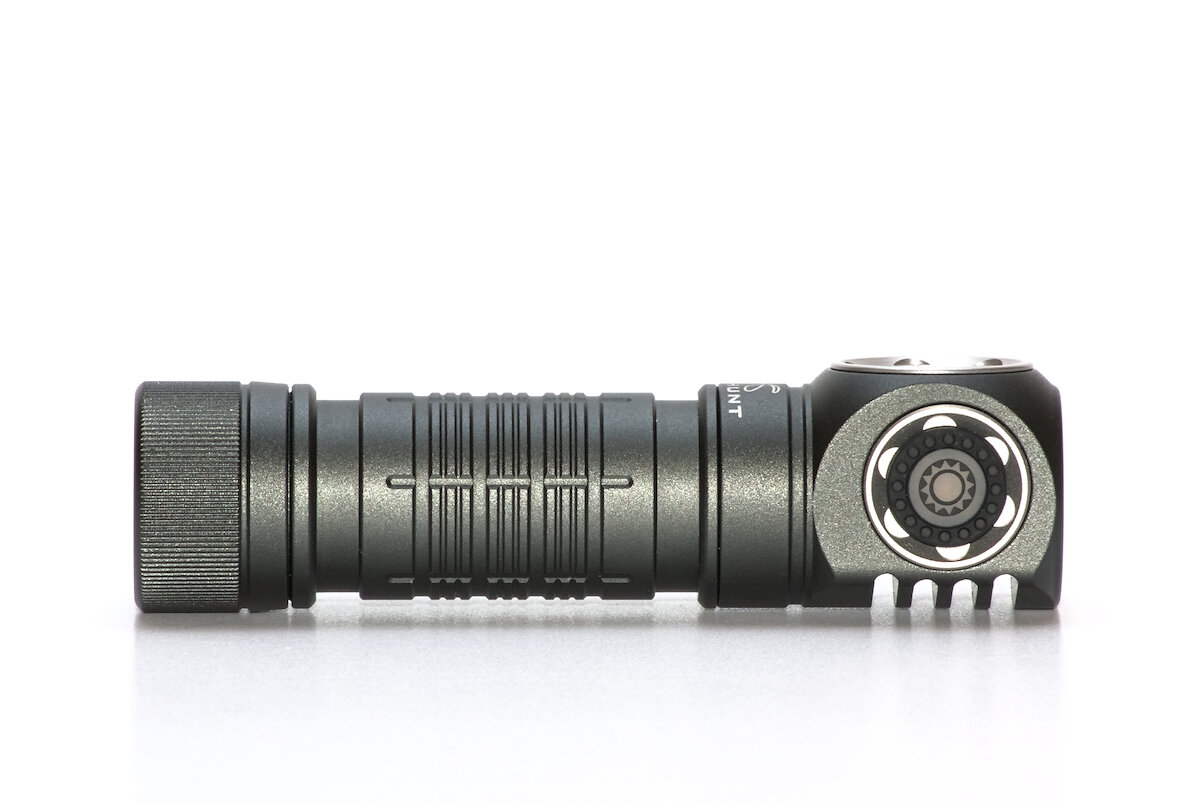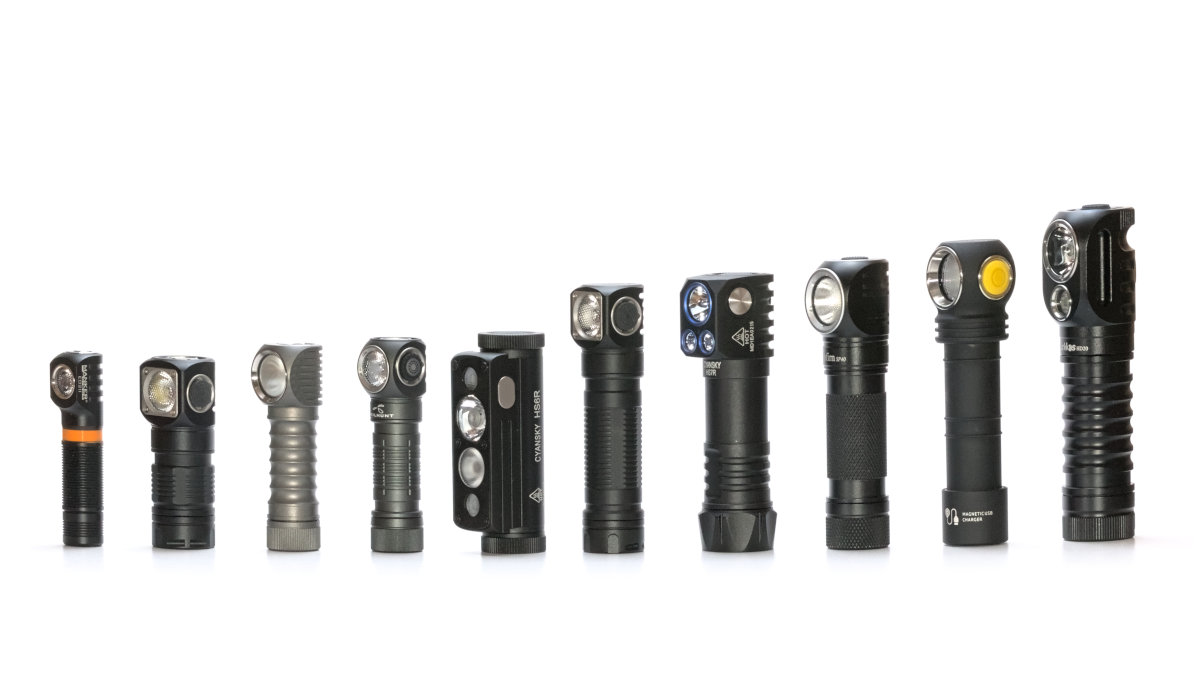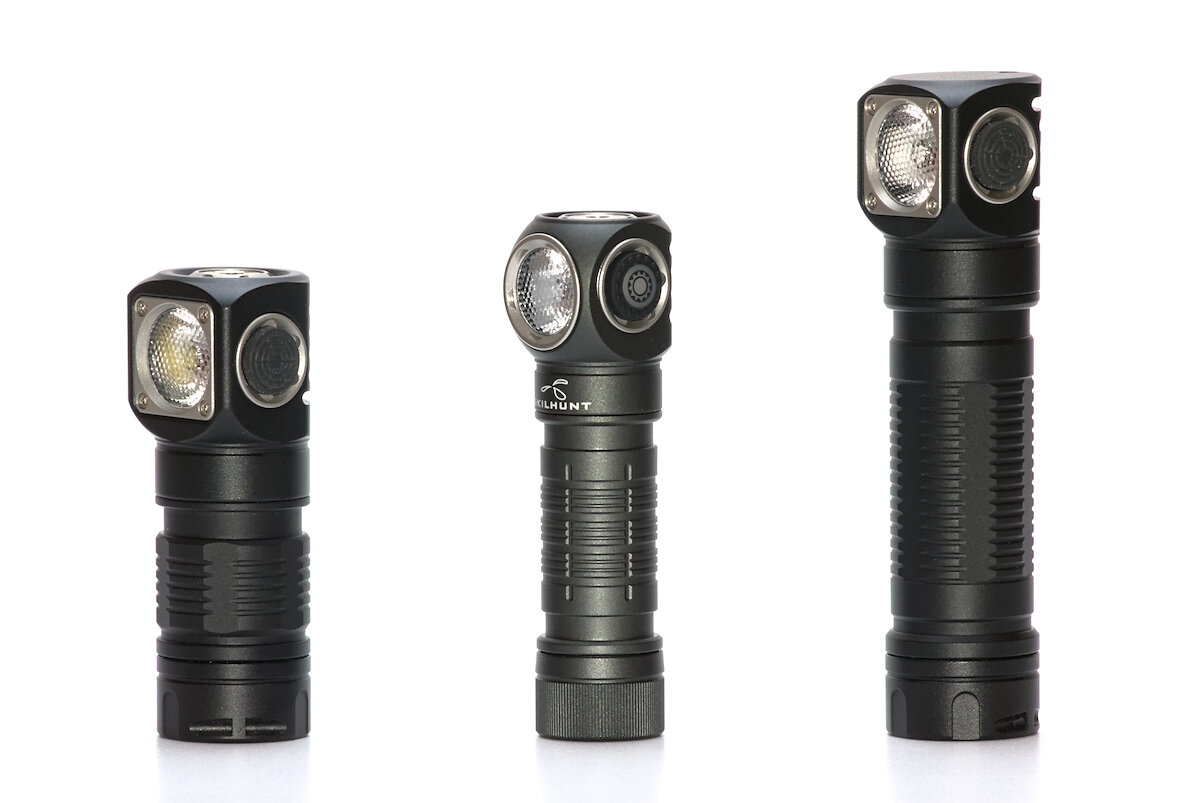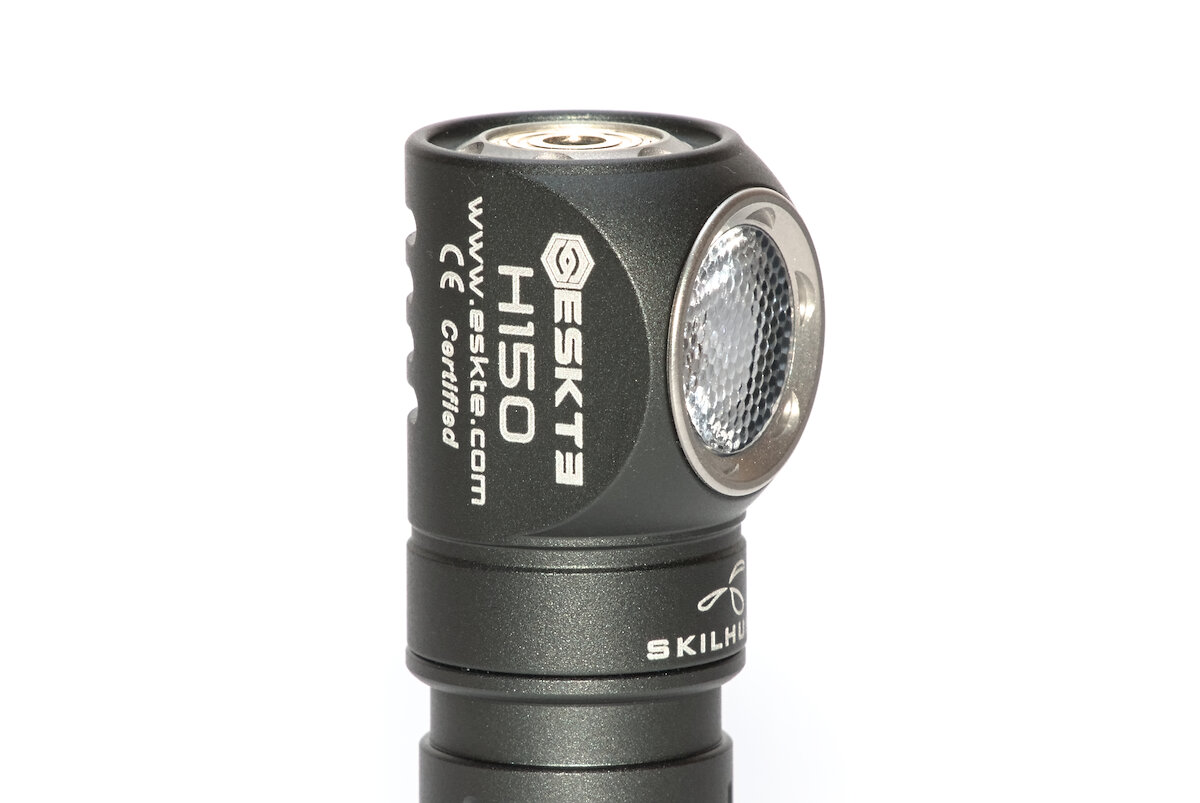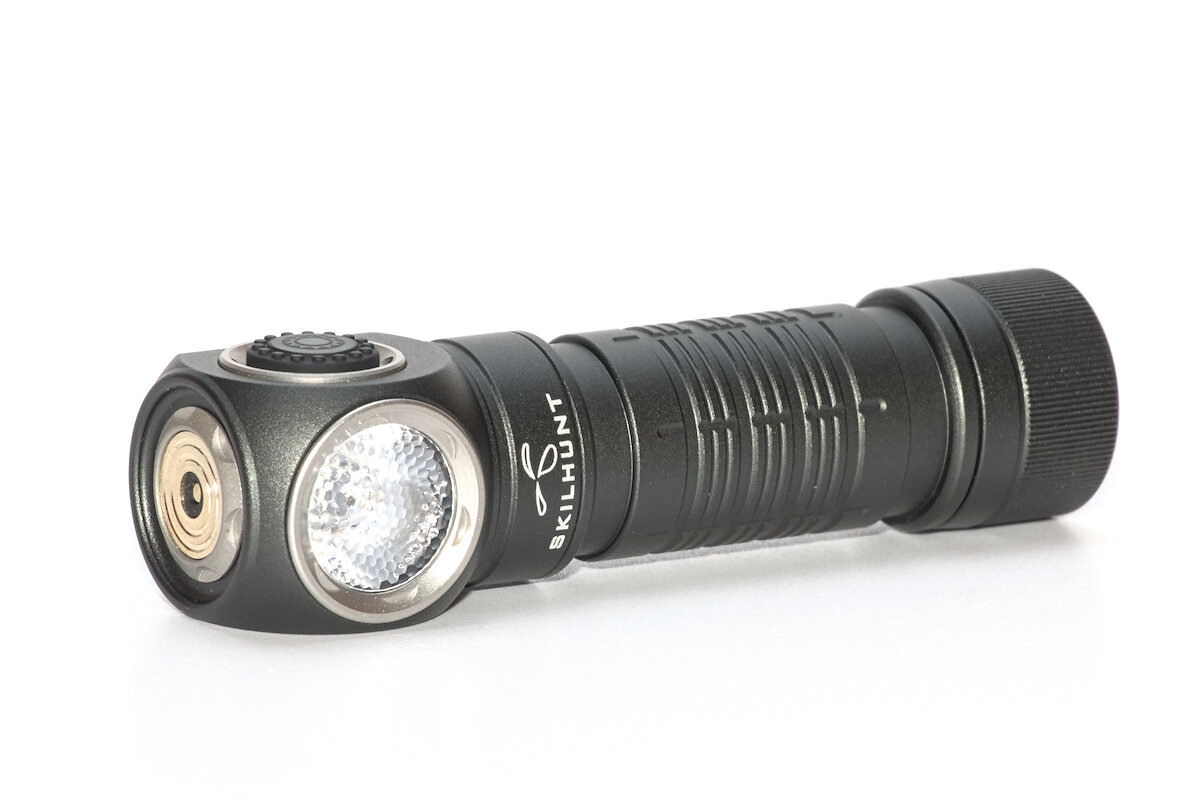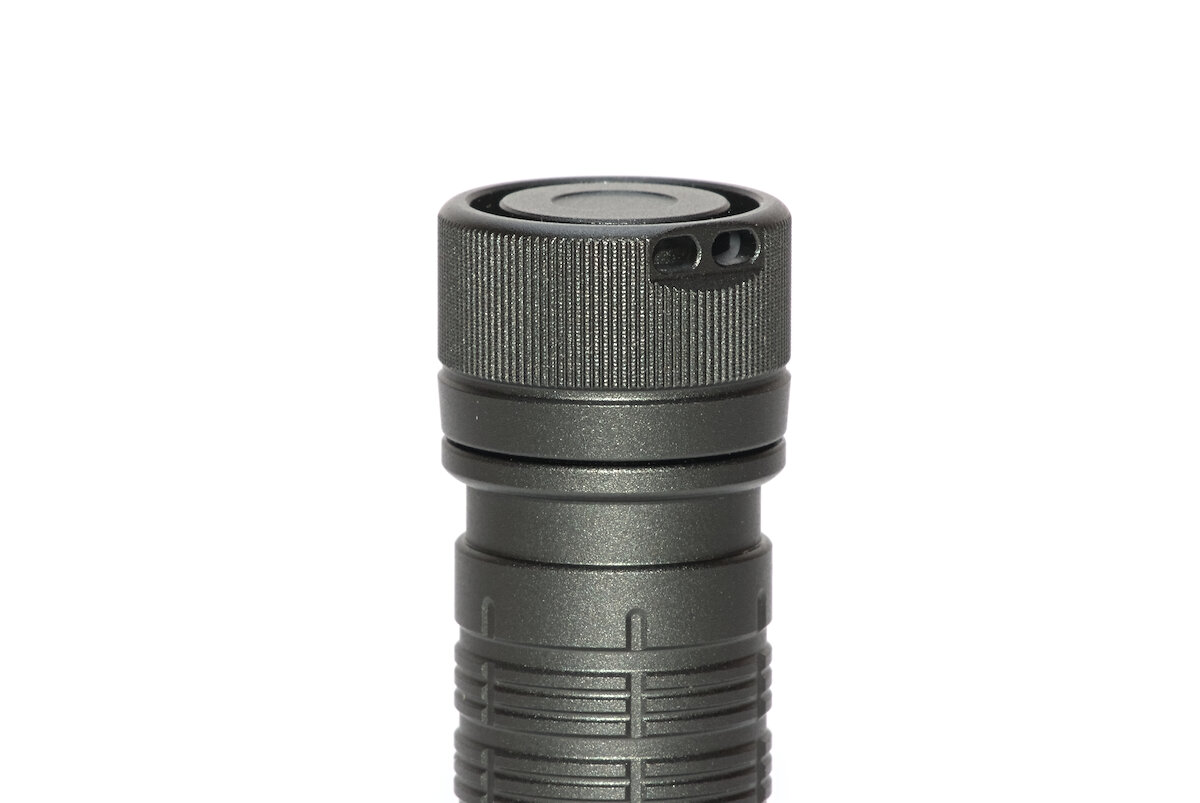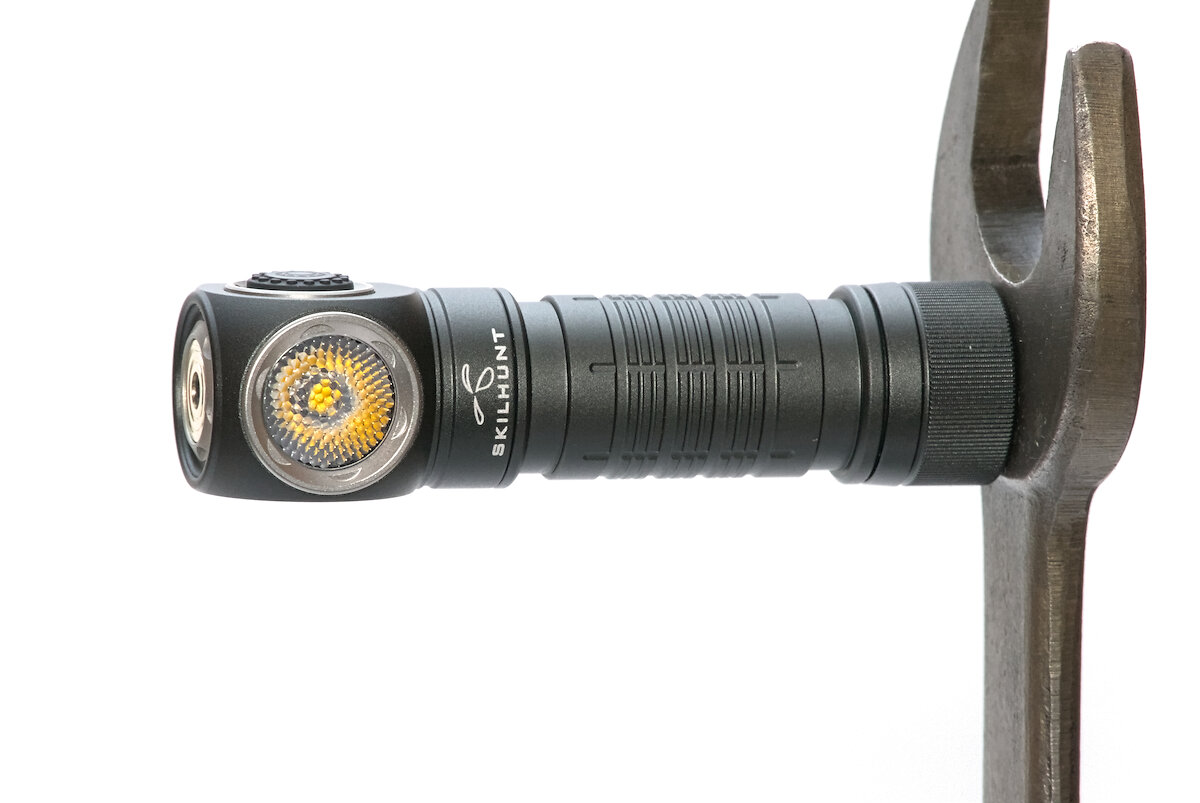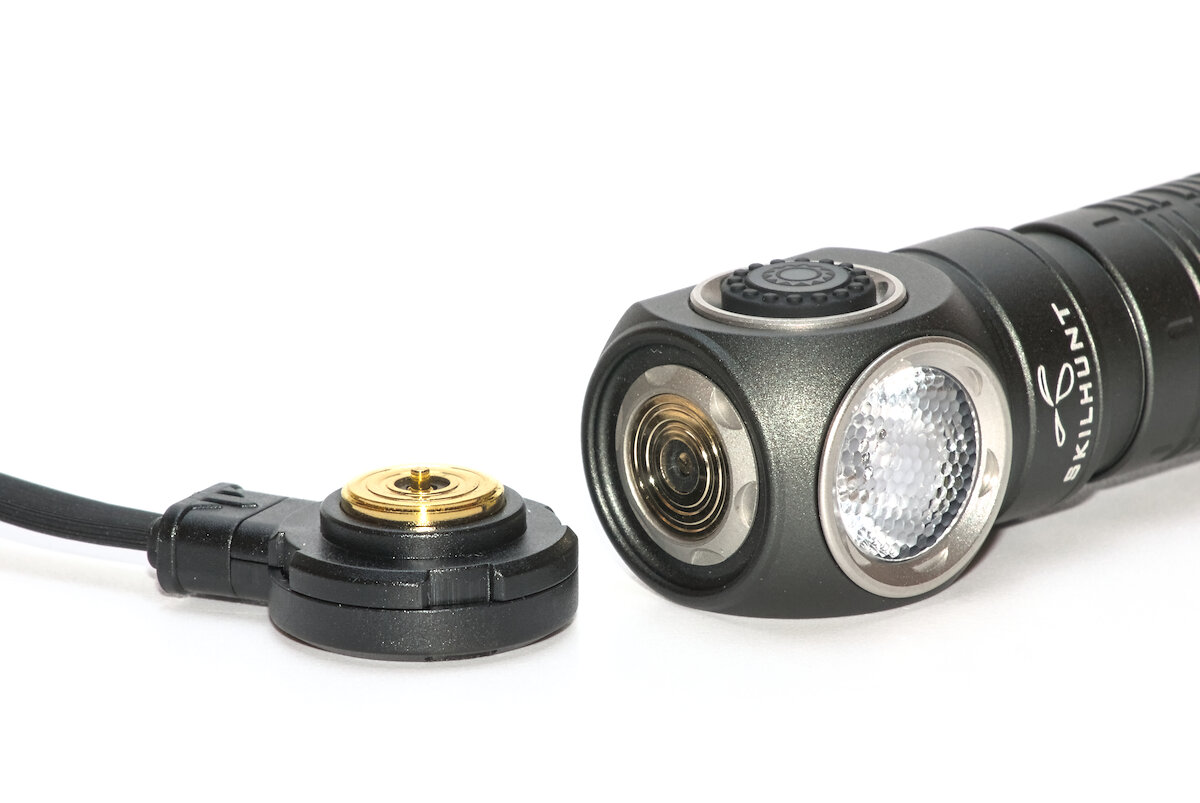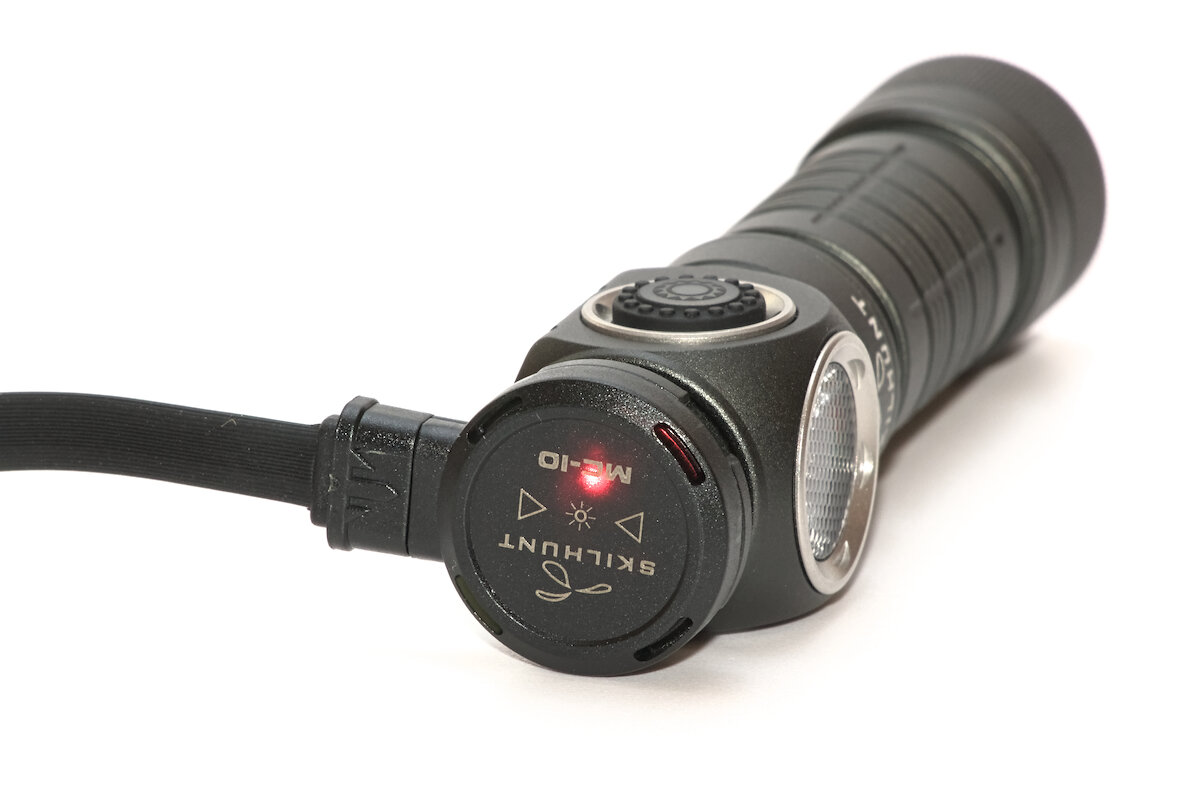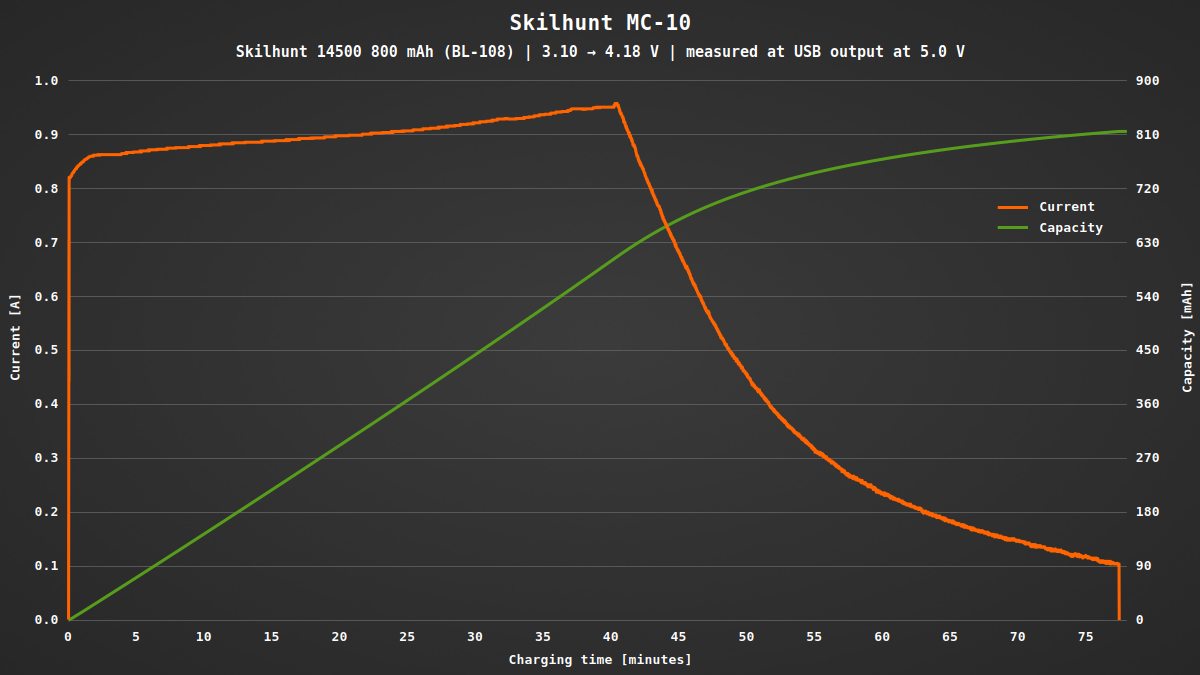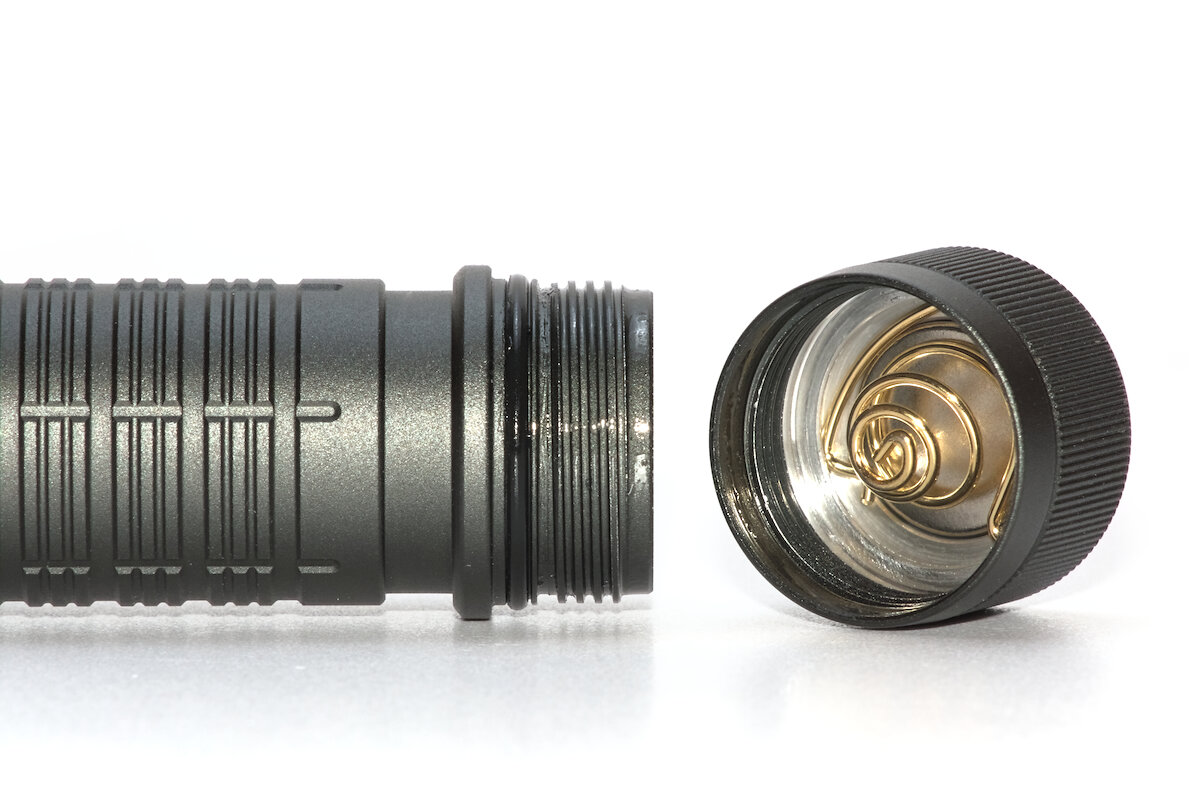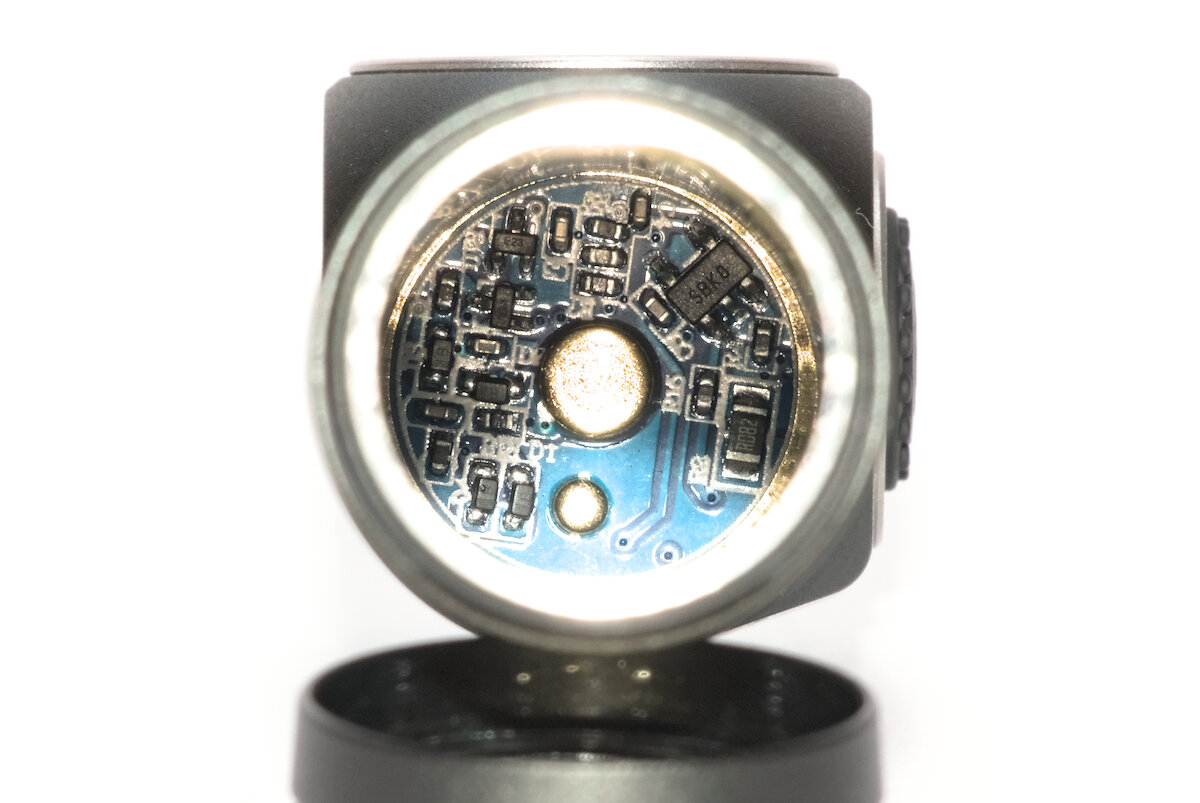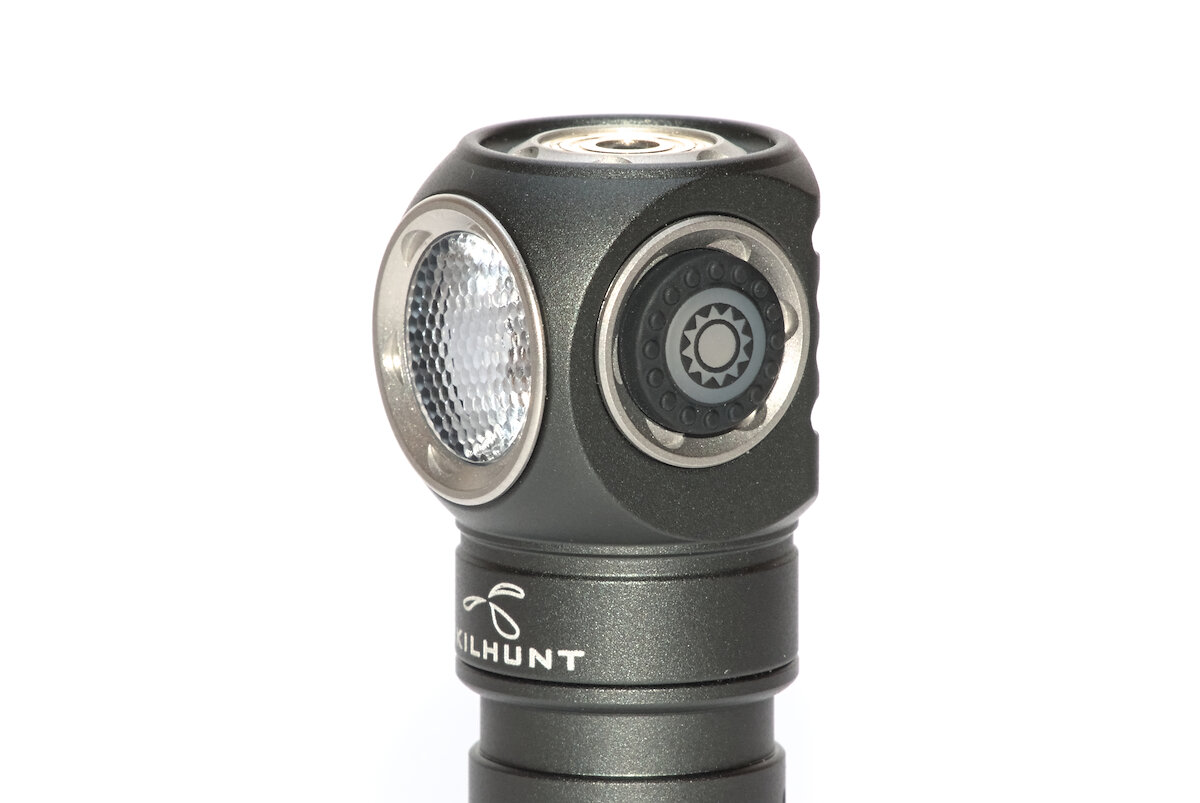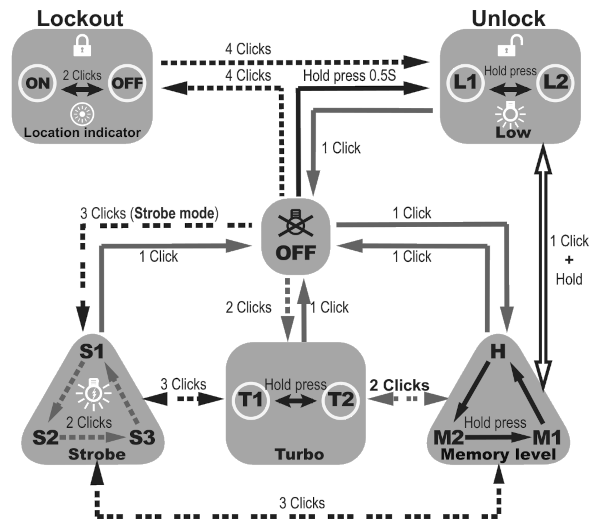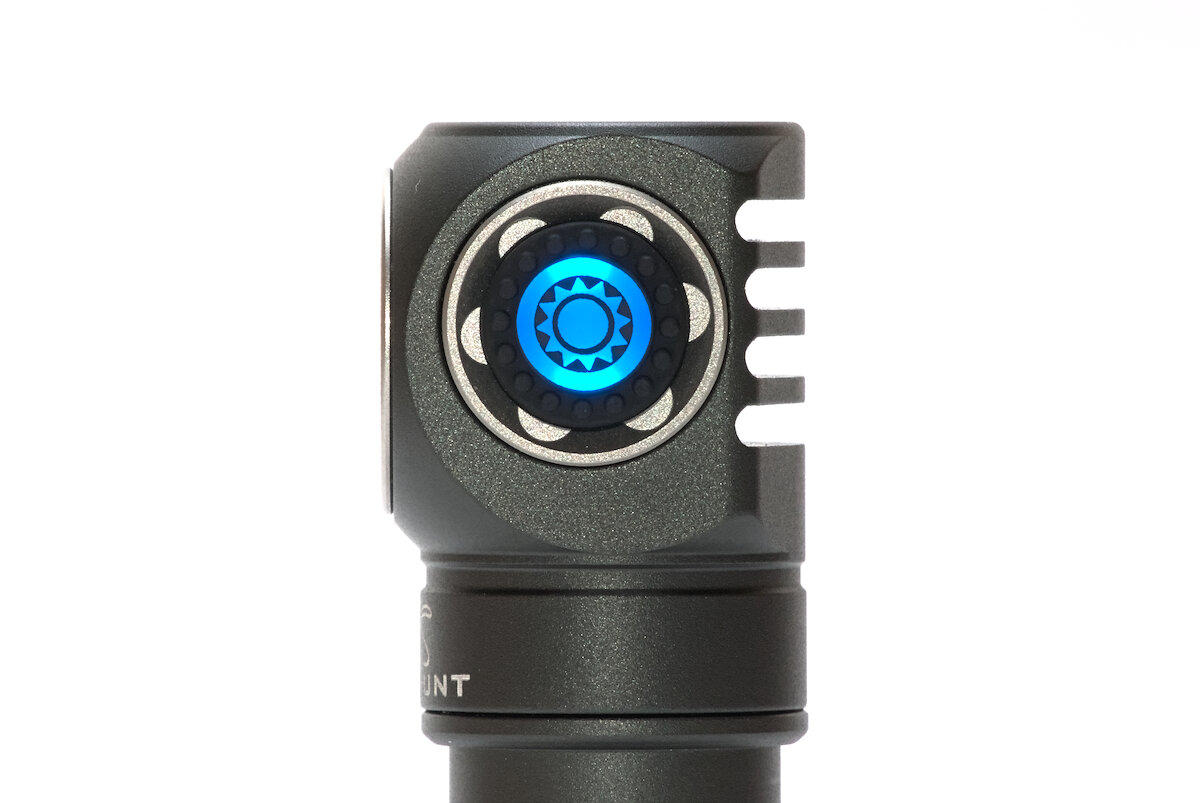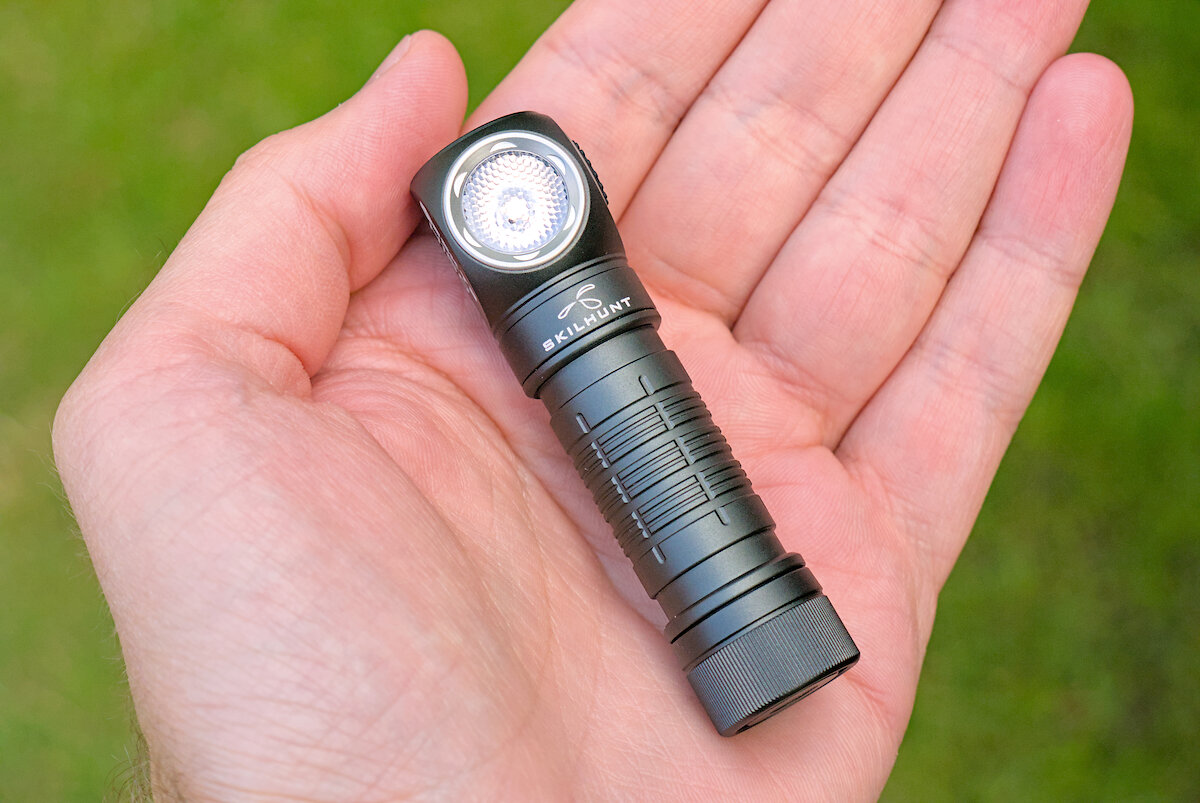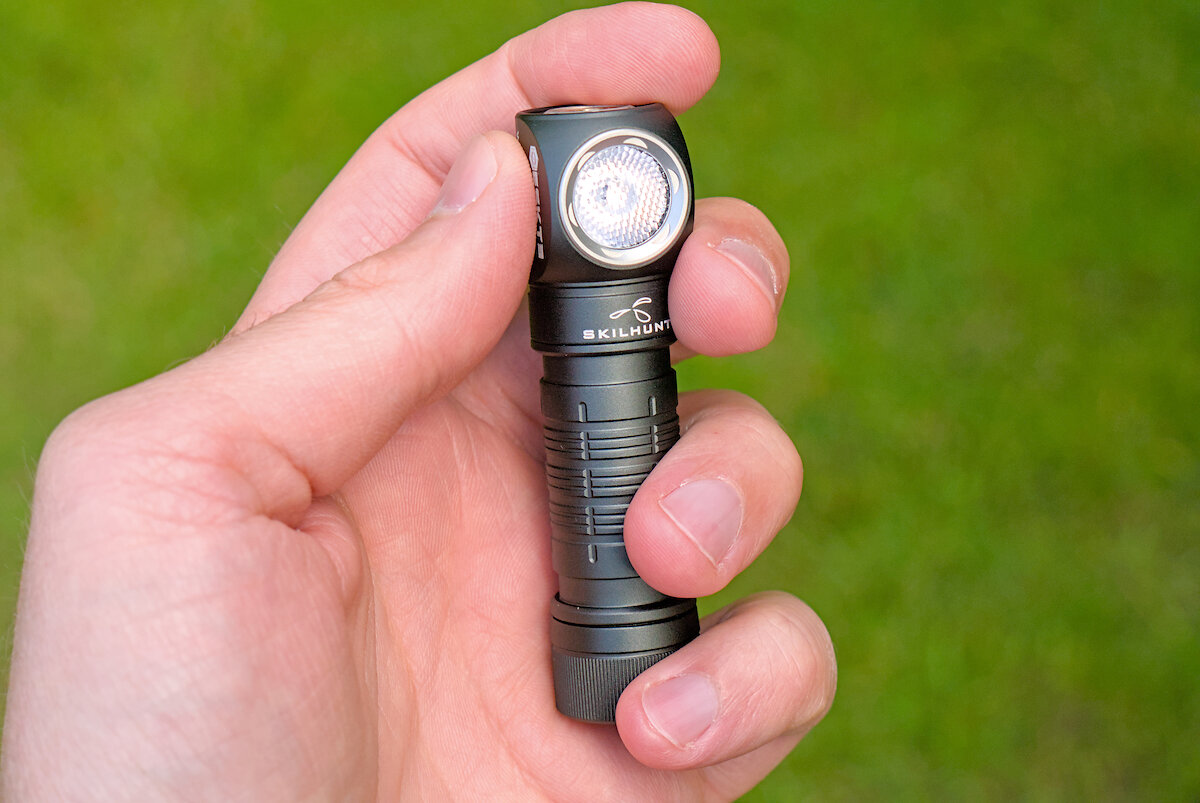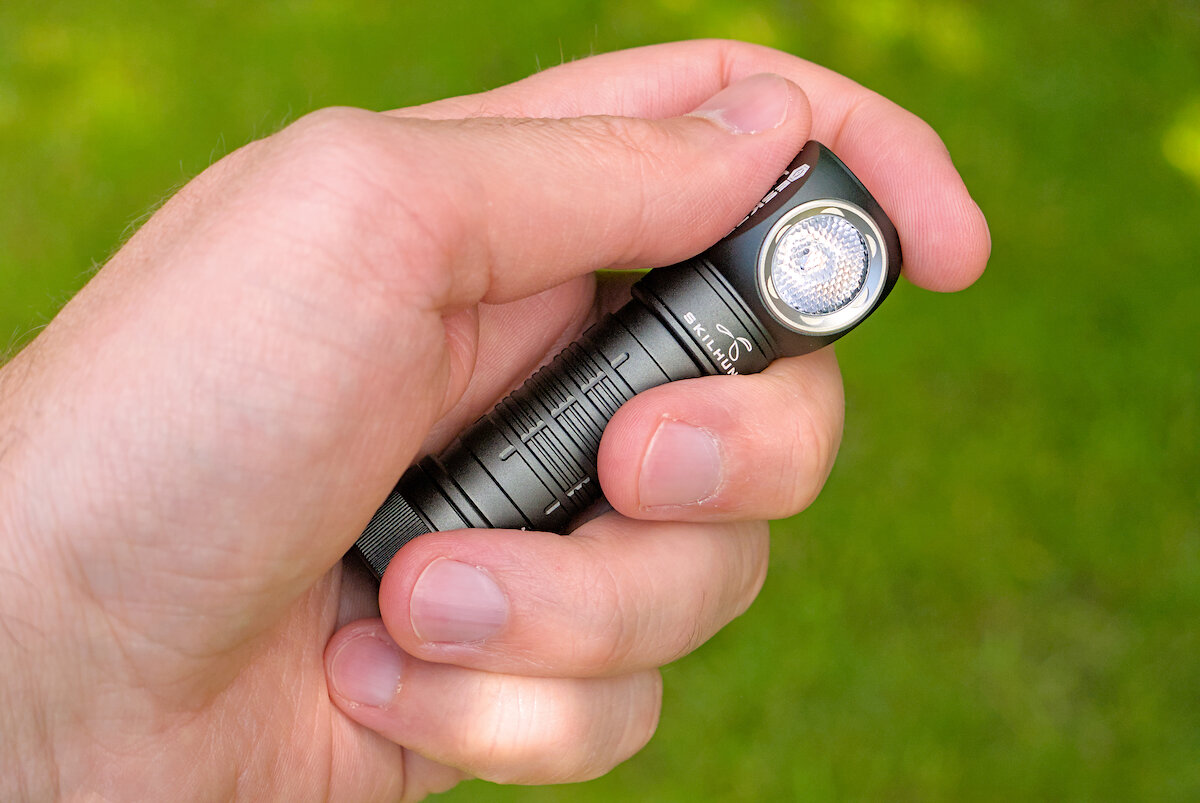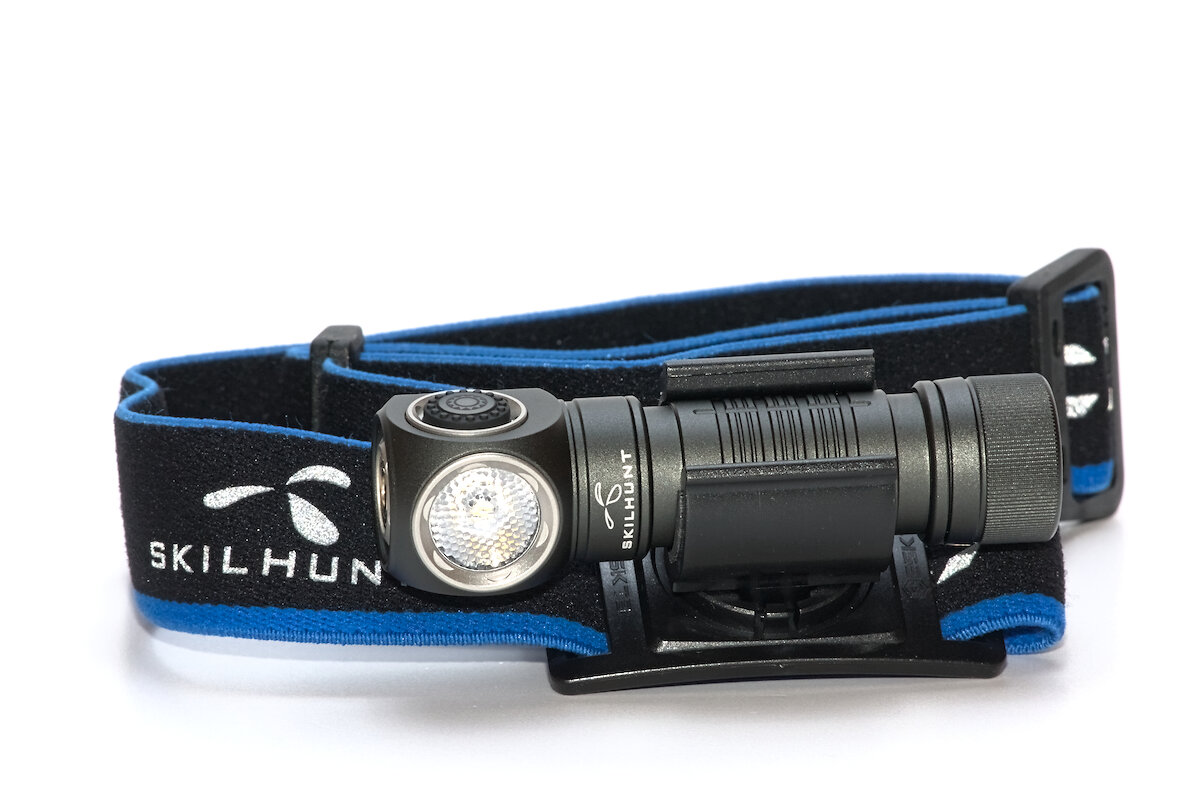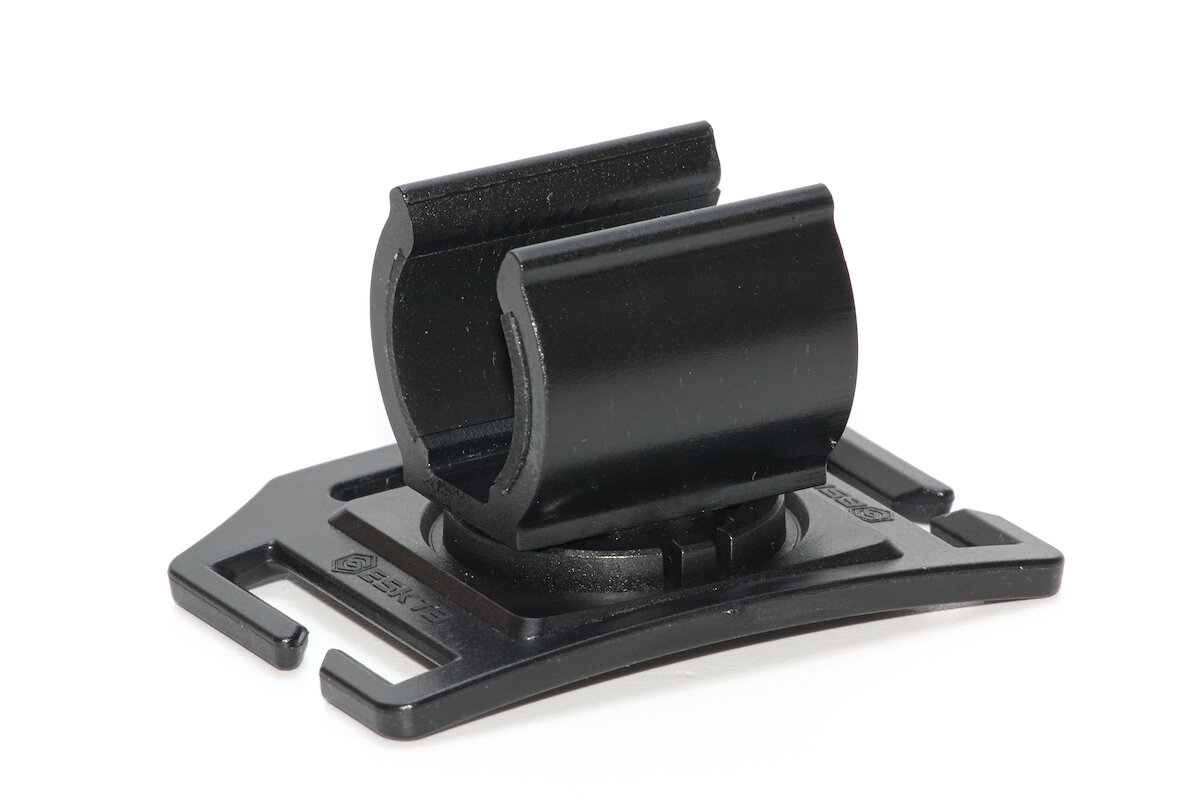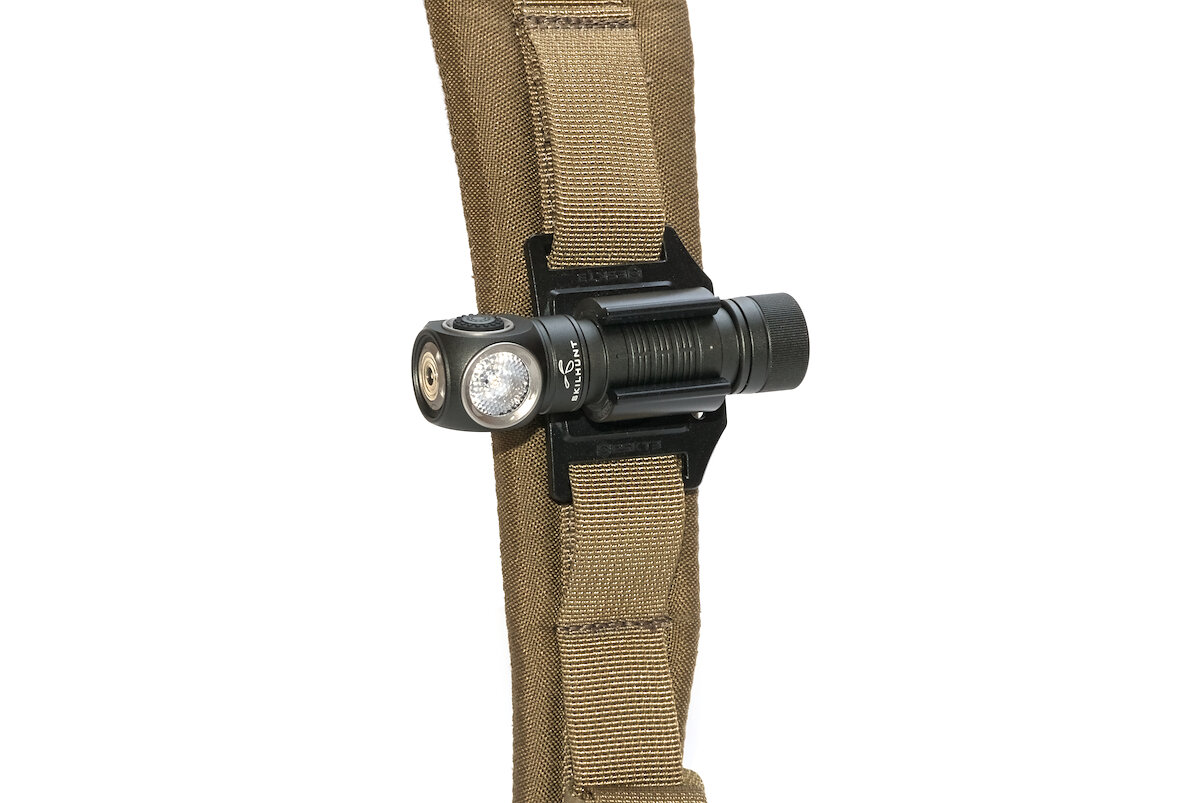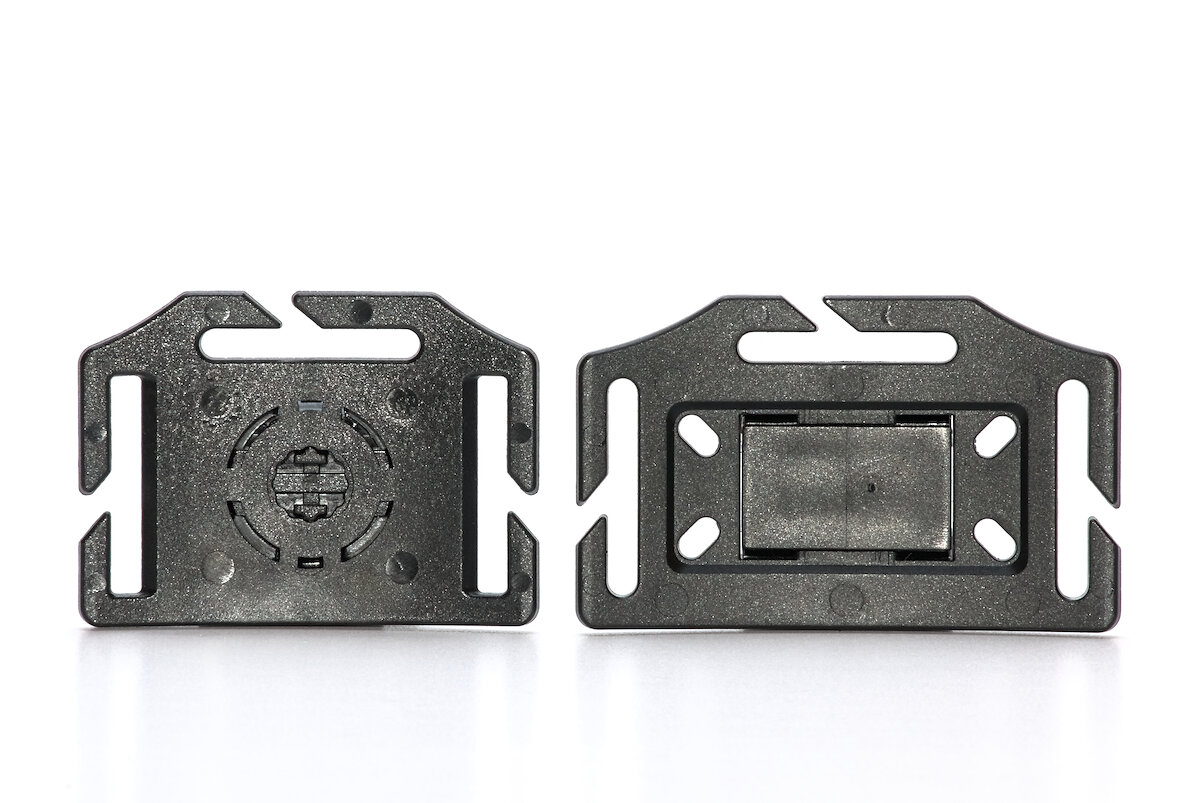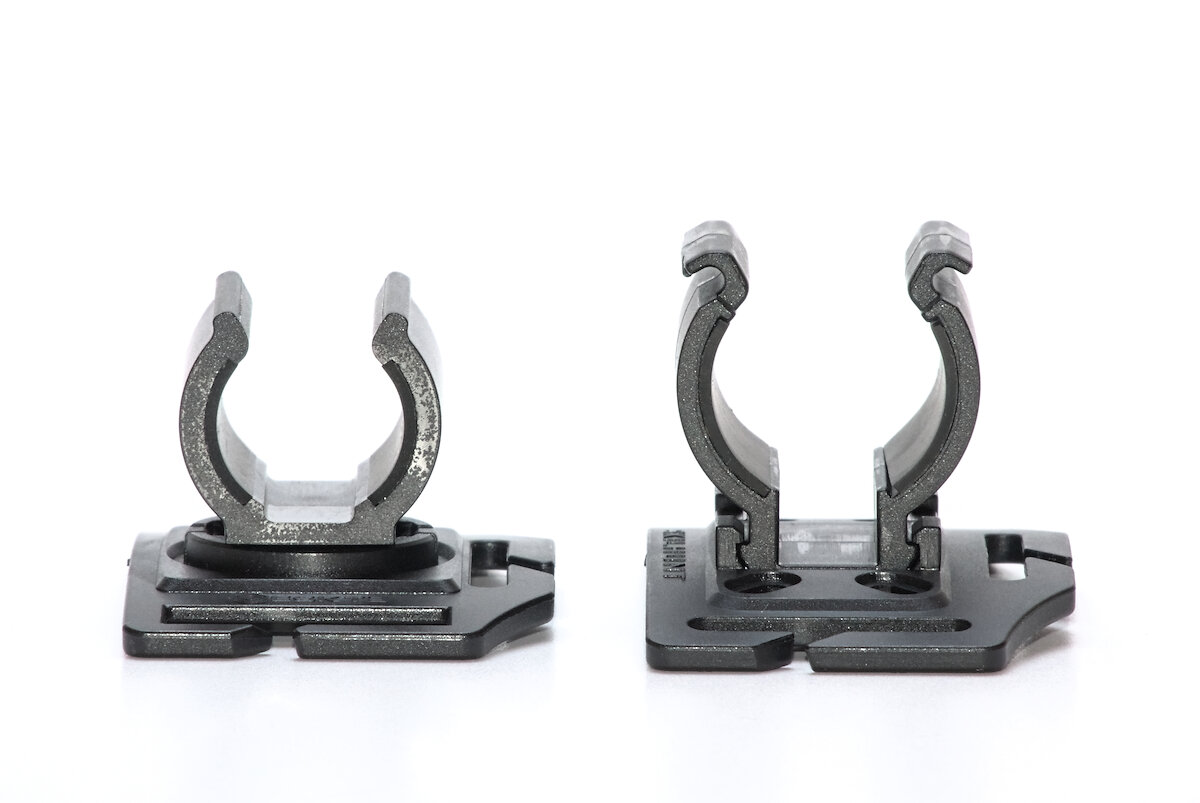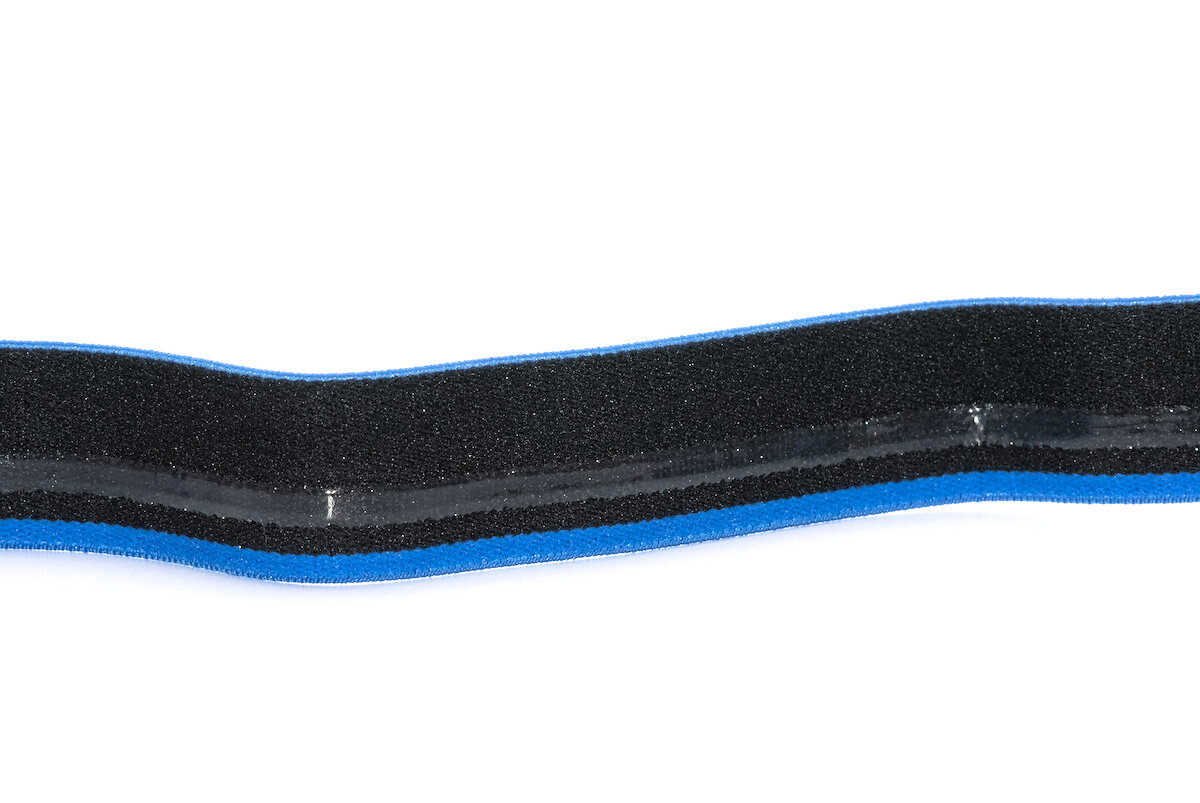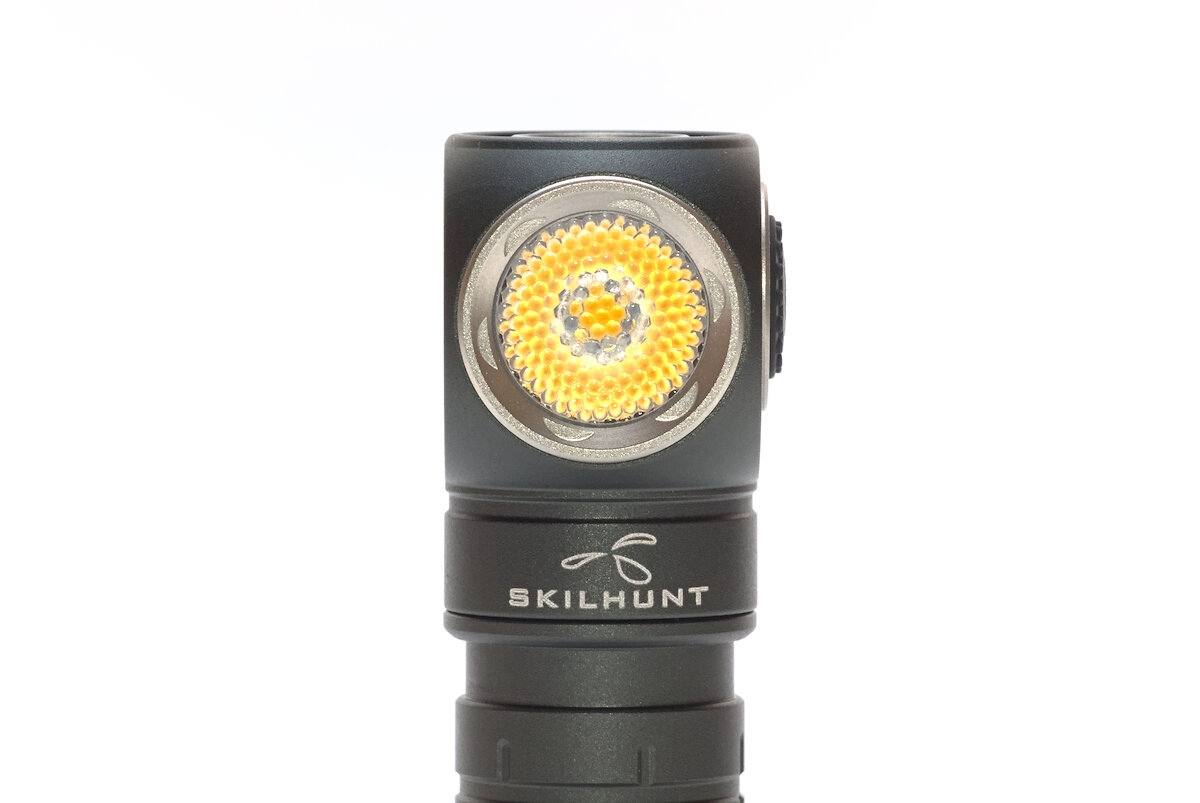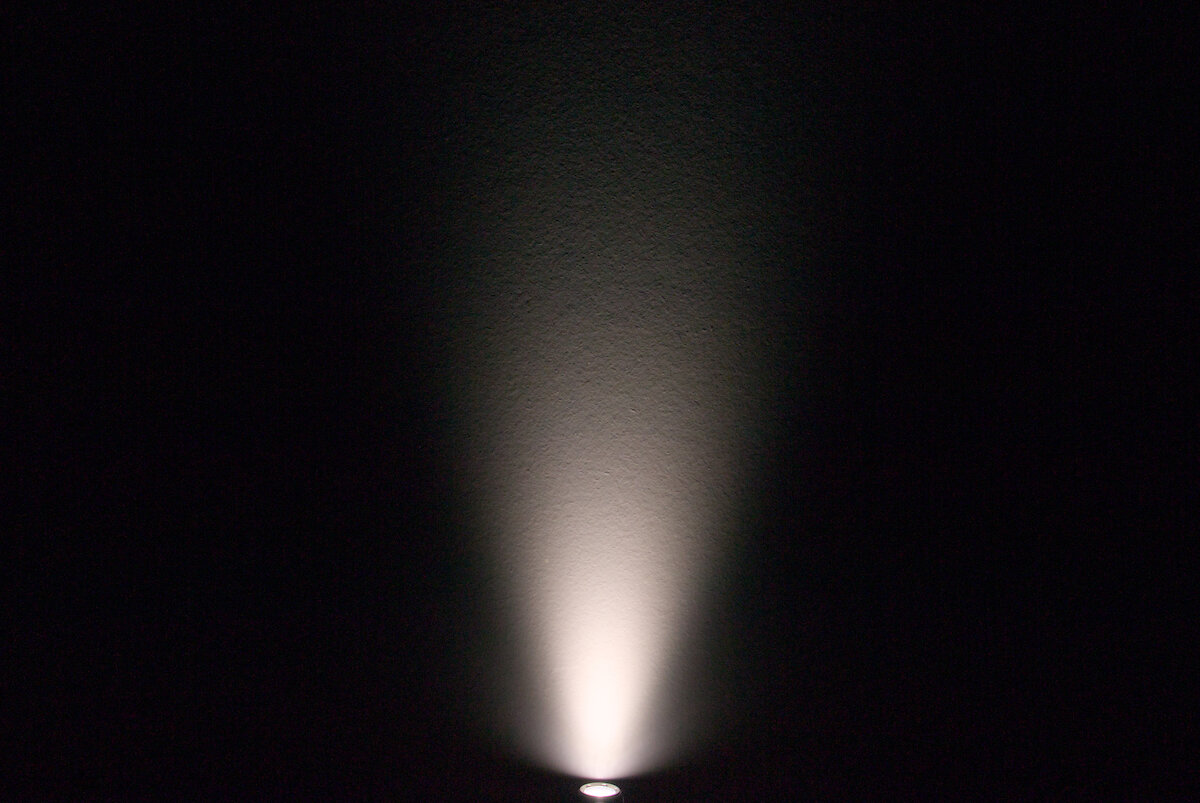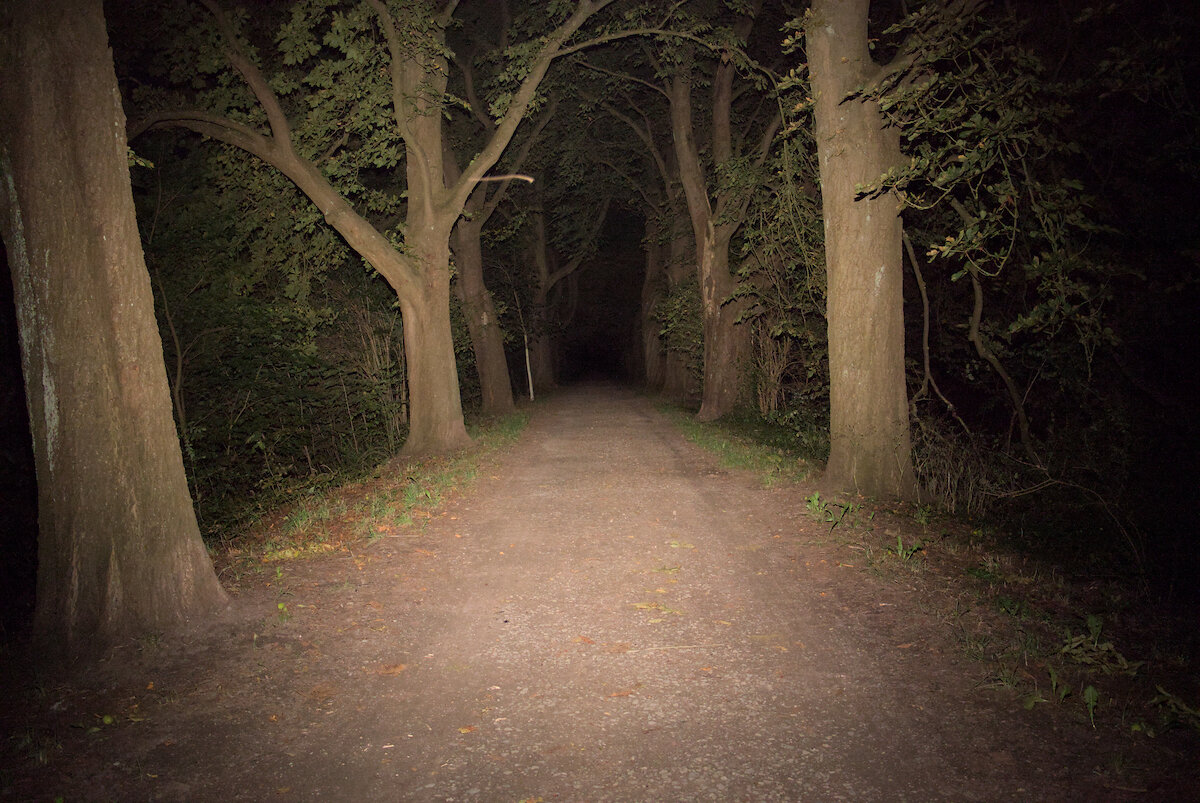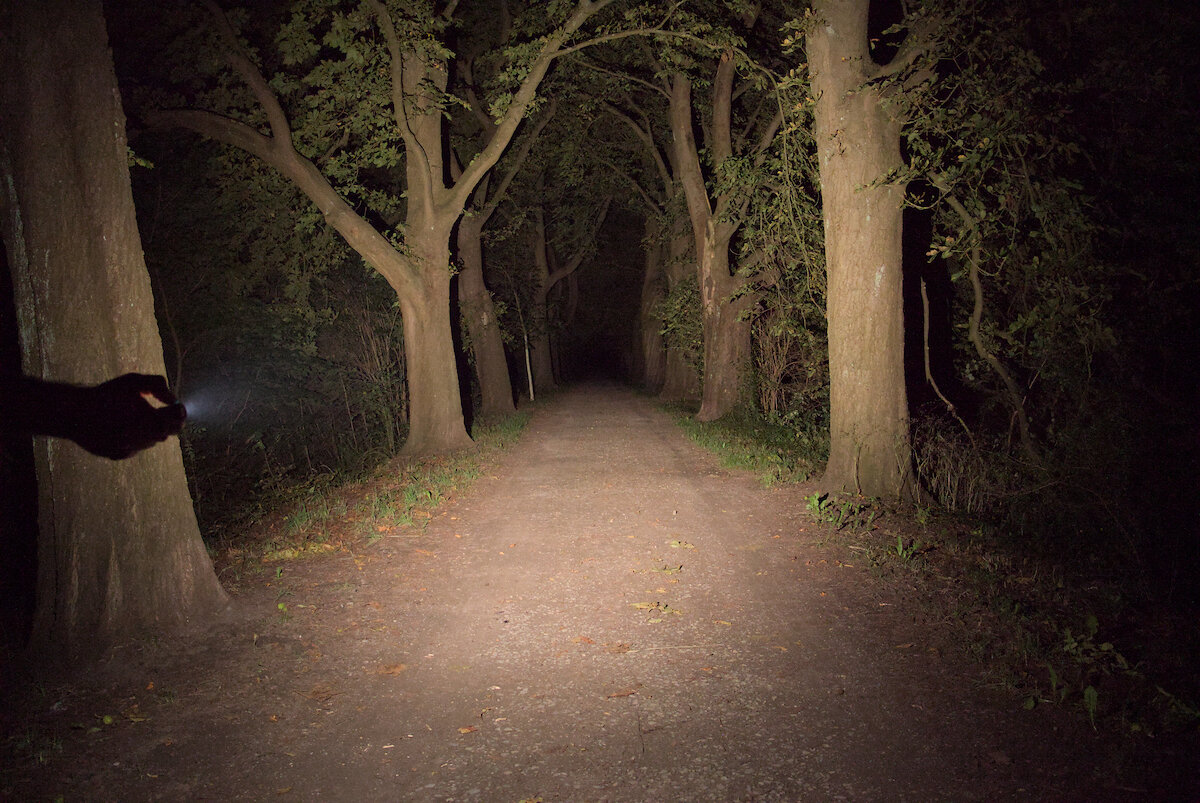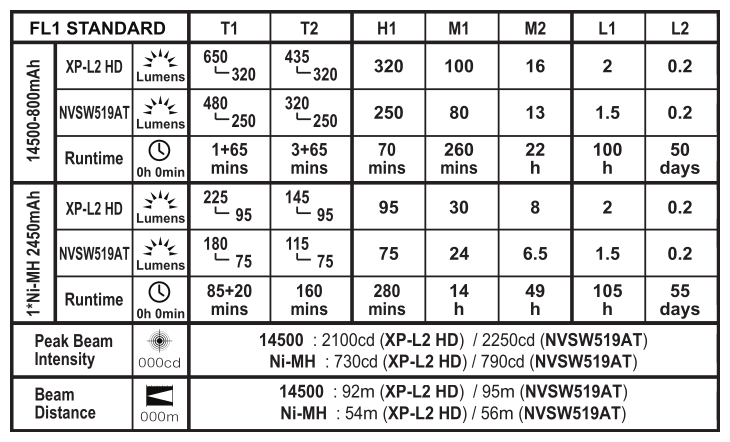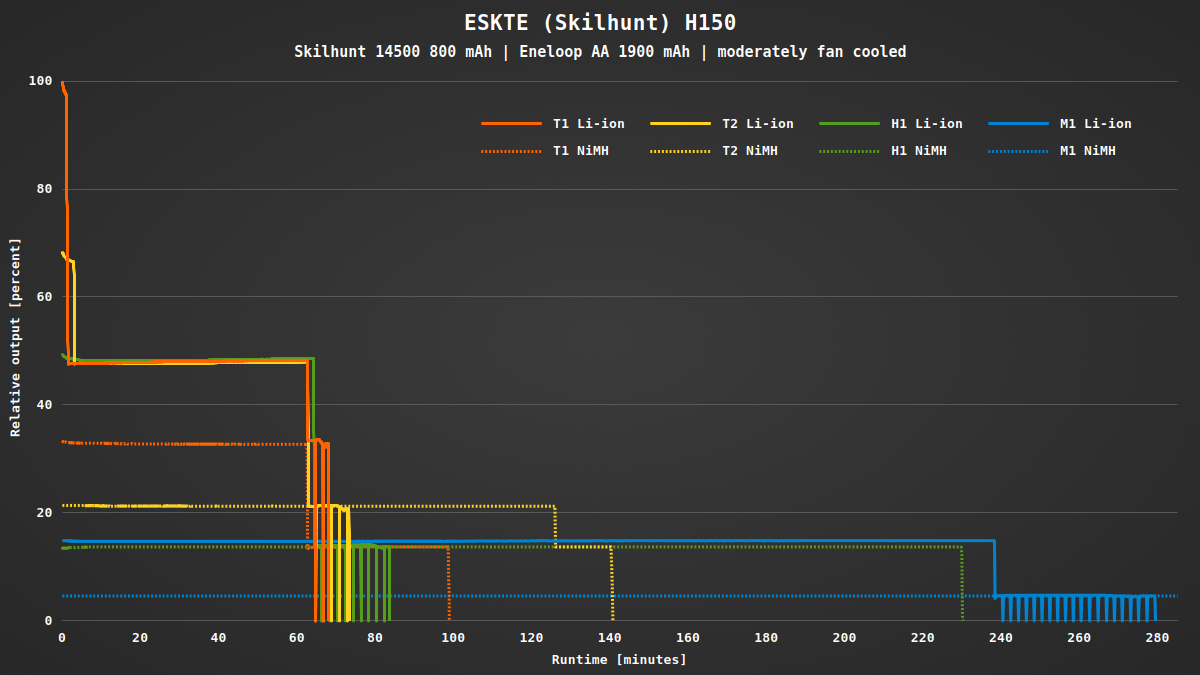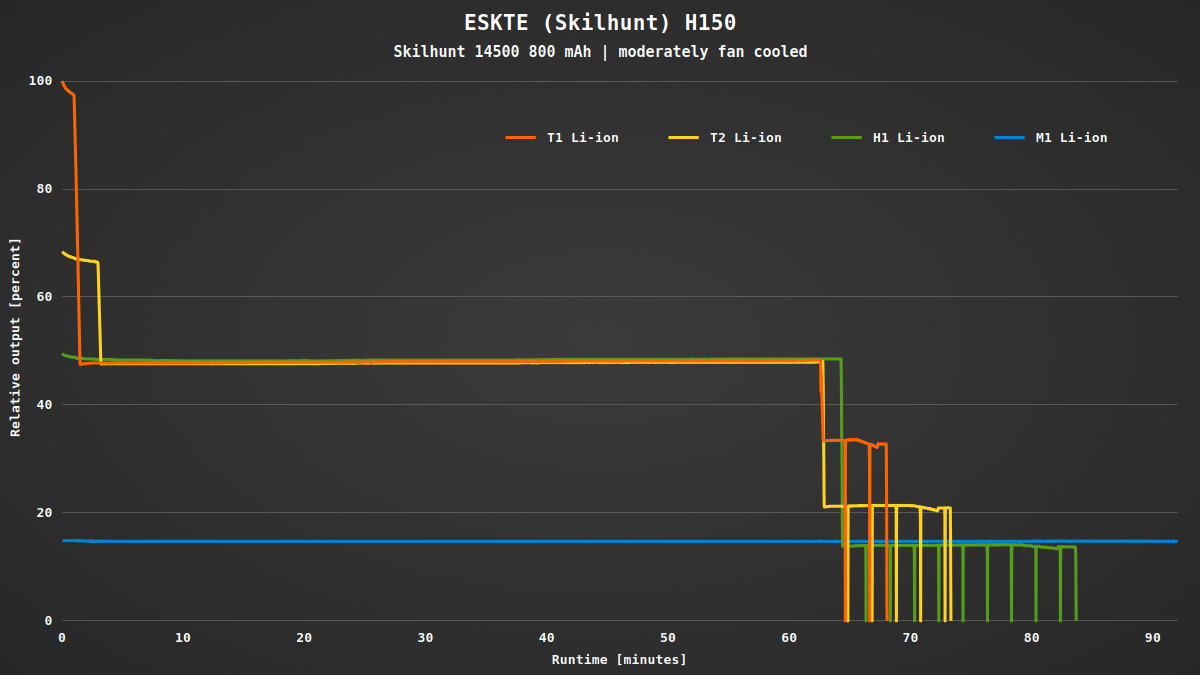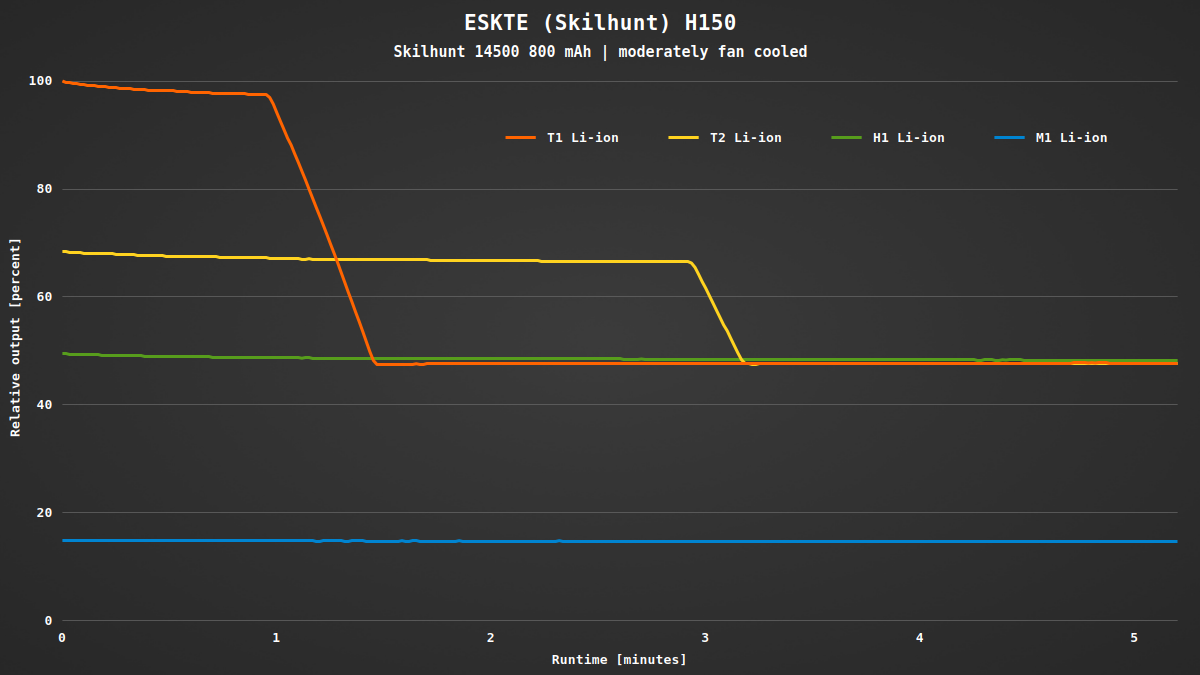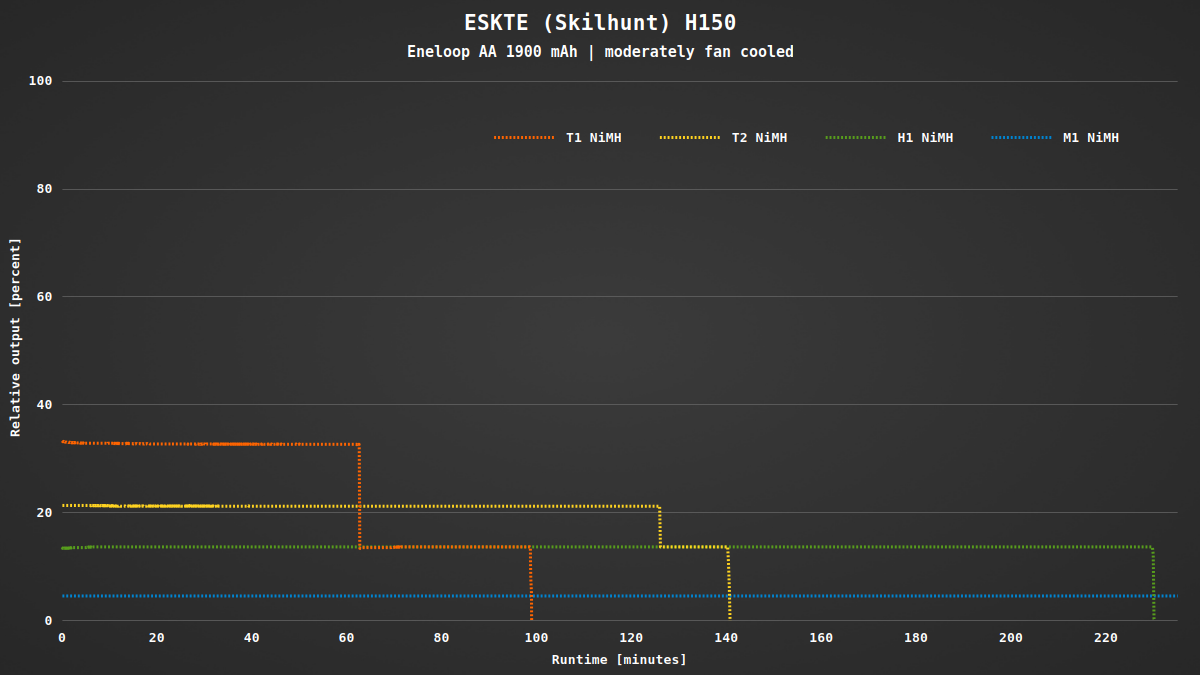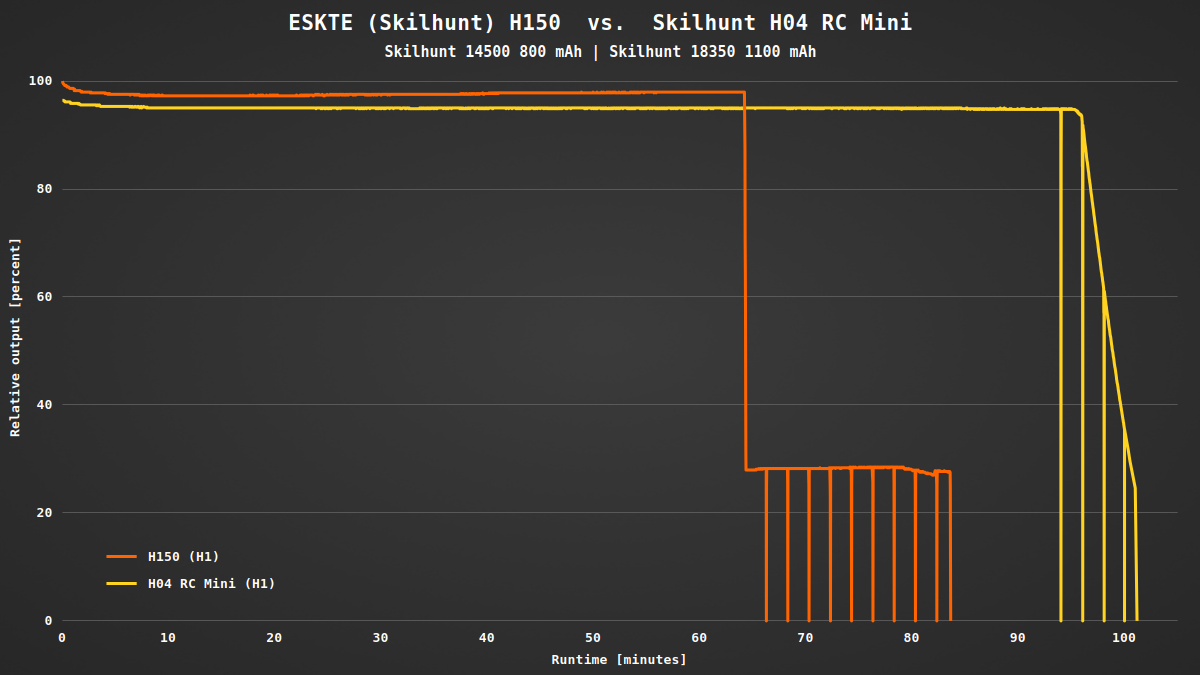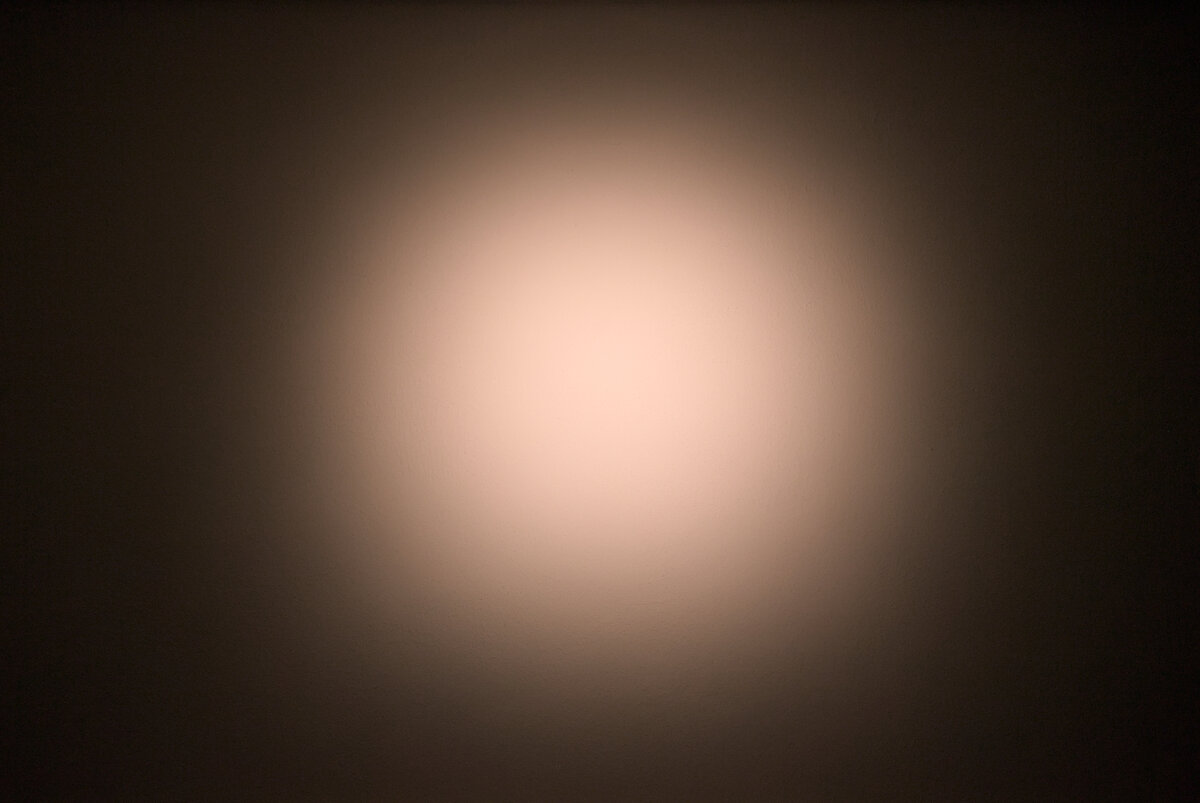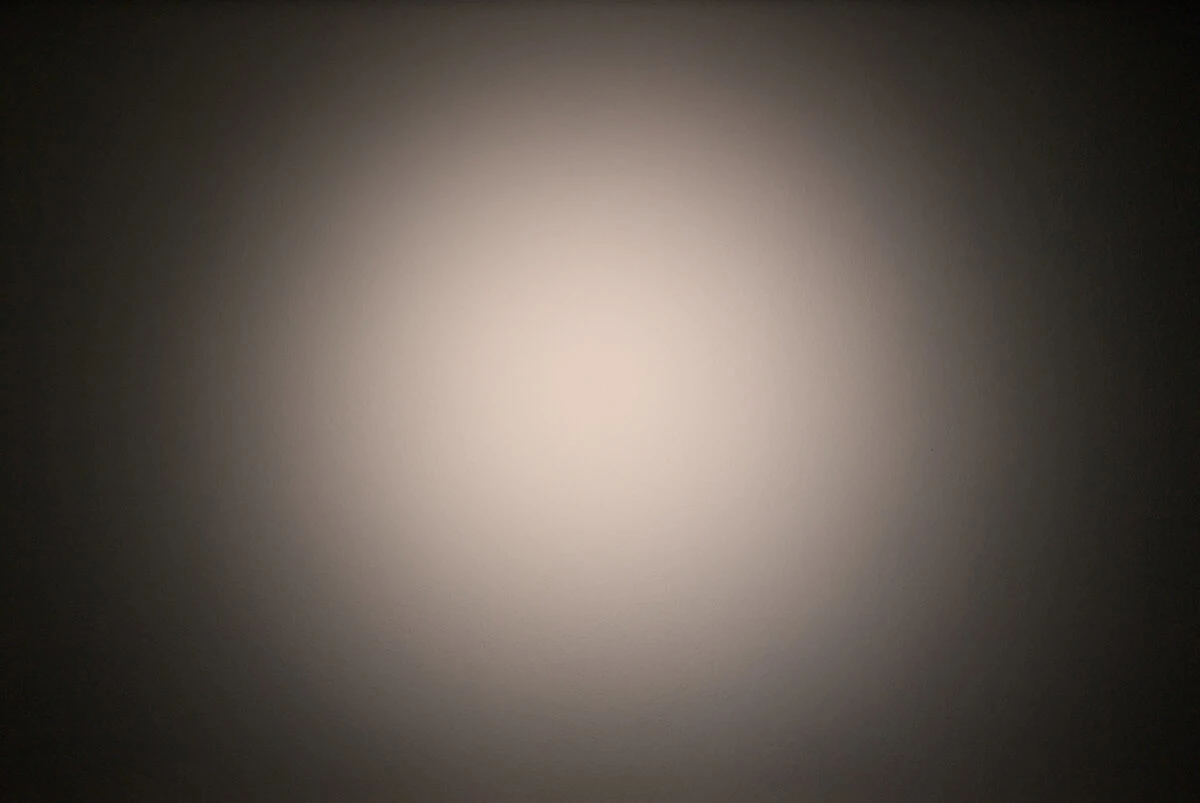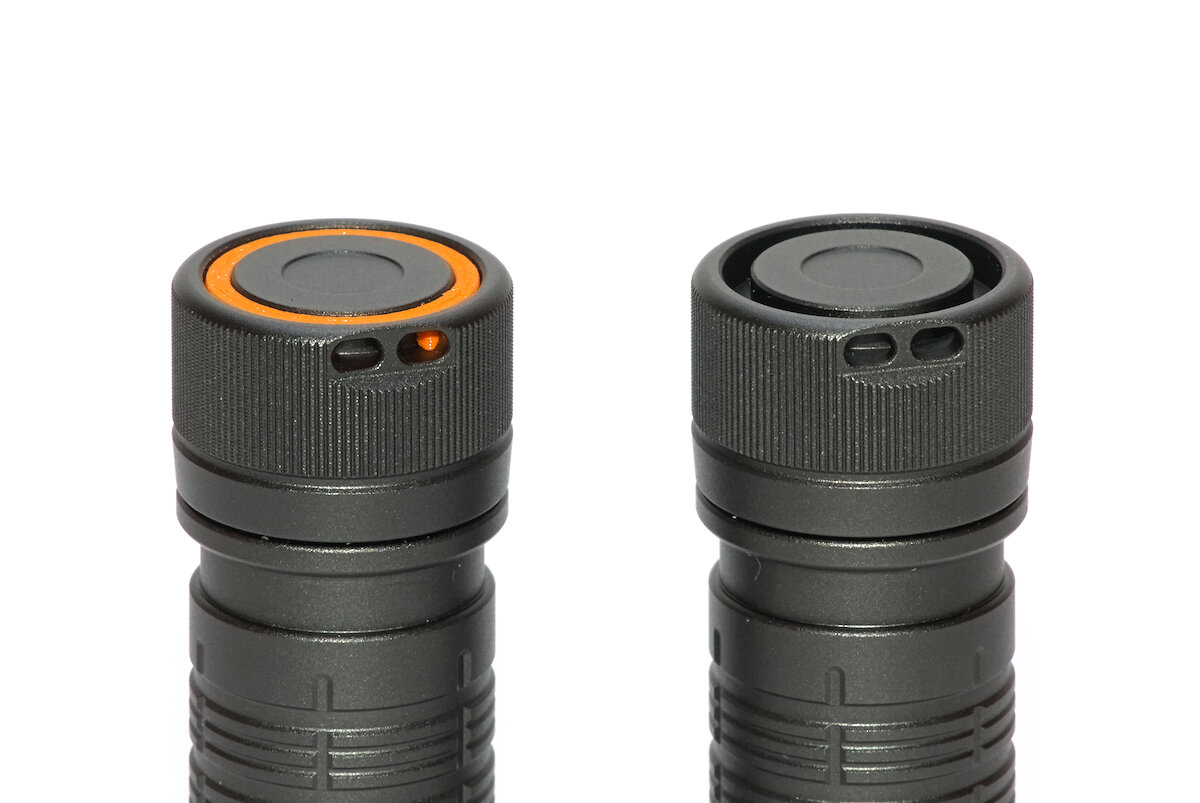Finally! This is the flashlight I’ve waited for so long since it was announced months ago: The ESKTE H150, a small 14500 Li-ion/NiMH right angle headlamp with Nichia 519A. And I can say: It is amazing!
This flashlight was provided by Skilhunt for this review, without any obligations. Thank you very much!
The review is also available in German on my website: SammysHP Blog › ESKTE (Skilhunt) H150
ESKTE what?
Is this review about the Skilhunt H150 or the ESKTE H150? Both. Skilhunt is in the process of being rebranded to ESKTE. New packaging, same content.
According to the manufacturer, ESKTE is the stylized form of “SKT” and this name was also used briefly several years ago. Now try again in a slightly modified form. But whether it’s Skilhunt or ESKTE – this review will be about the product and not the name.
Supplied parts and hardware
- “BL-108” 14500 Li-ion battery with 800 mAh (3.82 V on delivery, button-top, protected)
- Lanyard
- Headband with mount
- “MC-10” magnetic charging adapter
- Replacement O-ring (2x)
- Dual-way clip
- Manual (EN, CN, FR, DE, ES, RU, IT, SV, PL)
Only the UI description is translated, everything else is only in English.
The H150 is available in four colors right now: black, gray, green and orange. In this review I’ll show the gray one.
Length: 80.8 mm
Diameter: 20.5 mm (battery tube only 18 mm)
Weight: 33 g (+ 20 – 25 g for the battery)
Here’s a little size comparison (from left to right):
- Manker E02 II
- Skilhunt H04 RC Mini
- ZebraLight H52Fw
- ESKTE (Skilhunt) H150
- Cyansky HS6R
- Skilhunt H04
- Cyansky HS7R
- Sofirn SP40
- Armytek Wizard C2 Pro Nichia
- Wurkkos HD20
Please keep in mind that these headlamps use different batteries (AAA, AA, 18350, 18650, 21700) and that flashlight size doesn’t necessarily correlate with the battery size.
In comparison the H150 is really small, only slightly larger than the ZebraLight H52 and only 3 g heavier!
Here’s a better comparison between the three Skilhunt lights: H04 and H04 RC Mini. Of course the H04 with its 18650 battery is the largest and heaviest, but it also has more than three times the battery capacity.
| Length | Diameter | Weight (flashlight + battery) | |
|---|---|---|---|
| H150 | 80.8 mm | 20.5 mm | 33 g + 20 g = 53 g |
| H04 RC Mini | 71 mm | 23.5 mm | 46 g + 25 g = 71 g |
| H04 | 100.0 mm | 23.5 mm | 46 g + 47 g = 93 g |
If you remove the magnet, you can save another gram or two. And yes, the H04 weights the same as the H04 RC Mini, probably due to the thicker wall of the battery tube and the charging contact of the Mini.
The head of the H150 has text everywhere.
Otherwise the head is characterized by the charging contact and the switch. The battery tube has an interesting ribbed texture, which feel nice and secure.
The tailcap on the other hand has classic knurling to make it easier to unscrew. Two holes are available to attach a lanyard, in case you want to use it as a hand lamp.
The tailcap also includes a strong magnet. If you don’t like magnets, it is easy to remove by unclipping the spring.
For the H150, Skilhunt slightly improved the dual-way clip. It has a large opening on both ends and pretty good capacity. It can be attached in two ways:
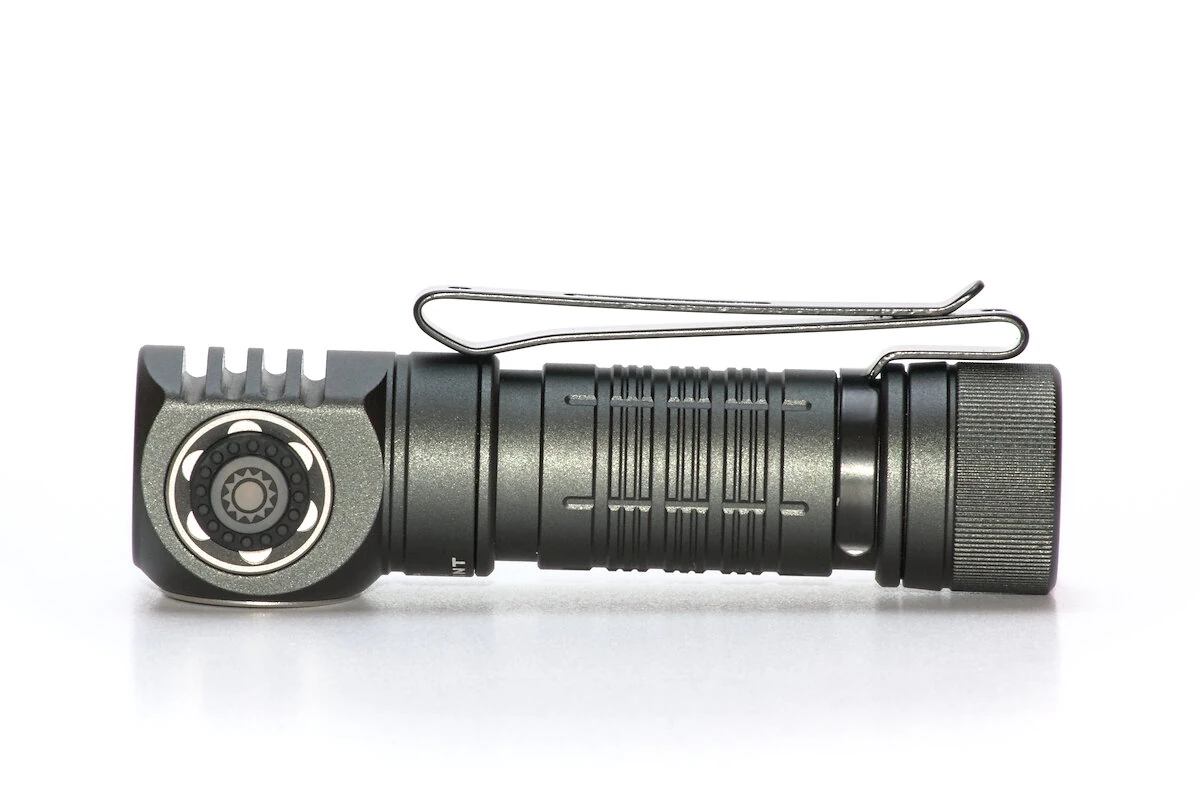
Empty battery? No problem! The magnetic charging adapter “MC-10” can be used to recharge the H150 as well as all other rechargeable flashlights from Skilhunt. Just bring it together and it snaps into place.
It only as a minor problem: Metal chips can easily agglomerate at the magnet and cause a short circuit. Unfortunately I can’t say at which current the port is disabled. While using a NiMH battery, the port is disconnected.
While charging a status LED in the charger lights up in red and switches to blue once charging is finished. You can use the flashlight while charging.
Charging current is almost 1 A, on the very high side for the small battery, but still acceptable. On the other hand charging is finished in less than 45 minutes.
Here’s the inside of the tailcap with the clipped spring and magnet.
The H150 not only works with 14500 Li-ion batteries, but also with NiMH, alkaline and lithium batteries!
If you look into the battery tube, you’ll see the large metal positive contact. Next to it is a small metal nub, acting as a mechanical reverse polarity protection. Thus only button-top batteries will work.
Warning: In the first version of the H150, the reverse polarity protection nub was connected to Ground. The use of a flat-top battery or an incorrectly inserted button-top battery led to a short circuit, which in the worst case could cause the flashlight to explode. The sale was stopped immediately and flashlight that had already been shipped were recalled and replaced free of charge. In the meantime this defect has been rectified and in newer versions the reverse polarity protection should do its job.
Machining is very good, the slightly matt anodization is flawless. Only the cooling fins have some sharp edges. It is rated at IPX8 and should withstand falls of up to one meter.
User interface and features
The H150 is controlled by a single electronic switch at the side of its head. This is my preferred location because you can use it by pinching with your thumb and index finger.
While the H04 has a very nice, soft and slip-resistant silicone switch, the H150 comes with a new version: Rather hard, smooth, feels more like plastic and it will squeak when you rub it. The center is translucent and has a printing with a stylized sun or light on it.
The UI is mostly the same as used by other Skilhunt flashlights. There are four groups in which you can change the brightness or mode cyclically. The selected setting is saved per group. What is new is that you can use 2H to switch between the low and normal groups without turning it off for a moment.
In lockout, the button flashes red. Always one second on, two seconds off. Of course, this increases power consumption. The indicator can be switched off and on with 2C. Holding the button gives you momentary access to the lowest level.
There are three blinking modes available in the strobe group: normal strobe (alternating between 15 Hz and 6 Hz), beacon (1 Hz) and a type of SOS (more of an S-O-S).
| State | Action | Function |
|---|---|---|
| Off | 1C | Turn on (last used in H/M1/M2) |
| Off | 2C | Turn on (last used in T1/T2) |
| Off | 3C | Turn on (last used in S1/S2/S3) |
| Off | 4C | Lockout |
| Off | 1H | Turn on (last used in L1/L2) |
| L1/L2 | 1C | Turn off |
| L1/L2 | 1H | Switch between L1/L2 |
| L1/L2 | 2H | Go to last used in H/M1/M2 |
| H/M1/M2 | 1C | Turn off |
| H/M1/M2 | 2C | Go to last used in T1/T2 |
| H/M1/M2 | 3C | Go to last used in S1/S2/S3 |
| H/M1/M2 | 1H | Switch between M2 → M1 → H |
| H/M1/M2 | 2H | Go to last used in L1/L2 |
| T1/T2 | 1C | Turn off |
| T1/T2 | 2C | Go to last used in H/M1/M2 |
| T1/T2 | 3C | Go to last used in S1/S2/S3 |
| T1/T2 | 1H | Switch between T1/T2 |
| S1/S2/S3 | 1C | Turn off |
| S1/S2/S3 | 2C | Switch between S1 → S2 → S3 |
| S1/S2/S3 | 3C | Go to last used in T1/T2/H/M1/M2 |
| Lockout | 2C | Turn button indicator on or off |
| Lockout | 4C | Unlock and turn on (last stage in L1/L2) |
| Lockout | Hold | Momentary L2 |
Once you get used to navigating through the groups, I think it’s pretty easy to work with. Everything is logically structured and easy to understand.
After turning on the flashlight, an indicator LED in the switch shows the approximate state of charge of the battery for five seconds, but only when using a Li-ion battery. For NiMH it stays off because the state of charge cannot be derived from the voltage of NiMH batteries.
| Color | State of charge |
|---|---|
| Blue | 80% ~ 100% |
| Blue blinking | 50% ~ 80% |
| Red | 20% ~ 50% |
| Red blinking | < 20% |
But the switch cannot be seen when wearing it on your head! True. But once the battery gets low, the main LED starts to blink every two minutes. On L1/L2 this is disabled by default. For the other levels it can be disabled by holding the button while the flashlight is turned on in L1/L2. After a few seconds the LED will blink a few times. If the light is off afterwards, the voltage warning blinking is disabled. When the LED stays on, it is enabled.
The Skilhunt HB3 mount is a true classic. The flashlight can simply clipped into the (rubberized) bracket, even with the clip attached. The curved shape makes it feel very comfortable and for even more stability you can use an additional elastic band at the top over the head. This bracket is also often bought for other flashlights because it is so great. For the smaller H150 Skilhunt has revised and improved the bracket again.
The new bracket not only became smaller, it can now be rotated in 12 steps. This is especially helpful when you use it not as a headlamp, but clipped to the strap of a backpack, for example. The openings have a width of one inch to make them compatible with MOLLE/PALS.
New bracket on the left, old HB3 on the right
The headband has to be assembled by yourself. Unfortunately there’s no documentation in the manual. The elastic band has a strip of soft silicone on the inside to prevent slipping.
The comfort is really good. The bracket weighs 13 g and the rubber strap 35 g. Even after a long time it didn’t hurt. Also the lamp does not bounce around as much as with a silicone holder and the upper rubber band provides additional stability.
Illumination
The H150 is available in two versions: Either with a cool white Cree XP-L2 or with a Nichia 519A in 4500 K. The latter might not be as bright, but has a really great color and CRI. If you are still undecided, you should definitely get the Nichia variant!
The LED sits behind a TIR optic with micro lenses. This gives you a balanced beam, center weighted, but still floody. That’s exactly how I like headlamps: floody enough to avoid tunnel vision, but not so floody that light is wasted around the edges.
The differences in the beam to the H04 are so minimal that a comparison doesn’t make sense. It is suitable for both short and medium distances, just right for a headlamp.
Driver and runtime
It gets a bit complicated with the brightness and runtime, because they differ depending on the selected LED and power supply (Li-ion or NiMH). Skilhunt did a pretty good job of putting it in a table though.
This mostly matches my measurements of the four highest levels. With all eight measurements in one chart, things get a little confusing. Therefore, I will look at Li-ion and NiMH separately.
When using a Li-ion battery, the brightness is reduced to about 50% after one minute at the highest level “T1” and after three minutes at T2. This corresponds to the third brightest level (“H”). After that, the brightness – just like with all other levels – is kept constant for the rest of the runtime.
Only at the end the brightness will suddenly drop and the flashlight starts blinking every two minutes to indicate that the battery is empty. Finally, the flashlight switches off completely to protect the battery from deep discharge. In my tests, the battery still had about 3.0 - 3.1 V. Officially the deep discharge protection should turn it off at 2.7 V. The difference can be explained by the voltage drop of the battery under load.
Things are different with a NiMH battery. Here you have a constant – albeit significantly lower – brightness for a relatively long time. In T1 and T2 there is a stepdown after some time, a while later the flashlight turns off without warning. Level H and below even run constant through to the end! In the end, the battery voltage was just over 1 V. The battery was therefore completely empty, but without being in the critical range.
Here is my current measurement of all stages, both for Li-ion and NiMH batteries, directly after switching on the flashlight with a fully charged battery.
| Mode | Li-ion | NiMH |
|---|---|---|
| T1 | 1640 mA | 1130 mA |
| T2 | 1047 mA | 650 mA |
| H | 710 mA | 405 mA |
| M1 | 200 mA | 143 mA |
| M2 | 41 mA | 50 mA |
| L1 | 9.2 mA | 20.5 mA |
| L2 | 0.7 mA | 1.4 mA |
| Off | 14 µA | 5 µA |
And how does it compare to the H04 RC Mini? I let both flashlights compete against each other in level H1. The H150 is slightly brighter at this level, but runs shorter. Understandable, considering the different battery capacities of 800 and 1100 mAh. There are 14500 batteries with a higher capacity, so the difference between the flashlights becomes even smaller.
I can’t say much more about the driver at this point. It would certainly be interesting to measure the efficiency in detail. At first glance it can keep up with the H04. The LED is controlled completely without PWM, I could not even measure ripple.
Conclusion
Whether it says Skilhunt or ESKTE – the H150 is an awesome headlamp! Small, supports Li-ion and NiMH batteries, can be charged via a magnetic adapter and the Nichia version gives you a beautiful, neutral light with high CRI. The beam is floody enough for a headlamp, but still achieves some usable throw. The comfortable and well thought-out head mount makes this a perfect set.
Is there anything bad to say about the H150? Not much. The magnetic charging port could become a problem if you have a lot of metal shavings around. The mechanical reverse polarity protection prevents the use of flat-top batteries. But otherwise? I can’t think of anything.
I can, without hesitation, recommend the ESKTE H150 to anyone looking for a small headlamp. But it also works good as a universal hand lamp.
